The Ultimate Guide to Sail Types and Rigs (with Pictures)
What's that sail for? Generally, I don't know. So I've come up with a system. I'll explain you everything there is to know about sails and rigs in this article.
What are the different types of sails? Most sailboats have one mainsail and one headsail. Typically, the mainsail is a fore-and-aft bermuda rig (triangular shaped). A jib or genoa is used for the headsail. Most sailors use additional sails for different conditions: the spinnaker (a common downwind sail), gennaker, code zero (for upwind use), and stormsail.
Each sail has its own use. Want to go downwind fast? Use a spinnaker. But you can't just raise any sail and go for it. It's important to understand when (and how) to use each sail. Your rigging also impacts what sails you can use.


On this page:
Different sail types, the sail plan of a bermuda sloop, mainsail designs, headsail options, specialty sails, complete overview of sail uses, mast configurations and rig types.
This article is part 1 of my series on sails and rig types. Part 2 is all about the different types of rigging. If you want to learn to identify every boat you see quickly, make sure to read it. It really explains the different sail plans and types of rigging clearly.

Guide to Understanding Sail Rig Types (with Pictures)
First I'll give you a quick and dirty overview of sails in this list below. Then, I'll walk you through the details of each sail type, and the sail plan, which is the godfather of sail type selection so to speak.
Click here if you just want to scroll through a bunch of pictures .
Here's a list of different models of sails: (Don't worry if you don't yet understand some of the words, I'll explain all of them in a bit)
- Jib - triangular staysail
- Genoa - large jib that overlaps the mainsail
- Spinnaker - large balloon-shaped downwind sail for light airs
- Gennaker - crossover between a Genoa and Spinnaker
- Code Zero or Screecher - upwind spinnaker
- Drifter or reacher - a large, powerful, hanked on genoa, but made from lightweight fabric
- Windseeker - tall, narrow, high-clewed, and lightweight jib
- Trysail - smaller front-and-aft mainsail for heavy weather
- Storm jib - small jib for heavy weather
I have a big table below that explains the sail types and uses in detail .
I know, I know ... this list is kind of messy, so to understand each sail, let's place them in a system.
The first important distinction between sail types is the placement . The mainsail is placed aft of the mast, which simply means behind. The headsail is in front of the mast.
Generally, we have three sorts of sails on our boat:
- Mainsail: The large sail behind the mast which is attached to the mast and boom
- Headsail: The small sail in front of the mast, attached to the mast and forestay (ie. jib or genoa)
- Specialty sails: Any special utility sails, like spinnakers - large, balloon-shaped sails for downwind use
The second important distinction we need to make is the functionality . Specialty sails (just a name I came up with) each have different functionalities and are used for very specific conditions. So they're not always up, but most sailors carry one or more of these sails.
They are mostly attached in front of the headsail, or used as a headsail replacement.
The specialty sails can be divided into three different categories:
- downwind sails - like a spinnaker
- light air or reacher sails - like a code zero
- storm sails

The parts of any sail
Whether large or small, each sail consists roughly of the same elements. For clarity's sake I've took an image of a sail from the world wide webs and added the different part names to it:

- Head: Top of the sail
- Tack: Lower front corner of the sail
- Foot: Bottom of the sail
- Luff: Forward edge of the sail
- Leech: Back edge of the sail
- Clew: Bottom back corner of the sail
So now we speak the same language, let's dive into the real nitty gritty.
Basic sail shapes
Roughly speaking, there are actually just two sail shapes, so that's easy enough. You get to choose from:
- square rigged sails
- fore-and-aft rigged sails
I would definitely recommend fore-and-aft rigged sails. Square shaped sails are pretty outdated. The fore-and-aft rig offers unbeatable maneuverability, so that's what most sailing yachts use nowadays.

Square sails were used on Viking longships and are good at sailing downwind. They run from side to side. However, they're pretty useless upwind.
A fore-and-aft sail runs from the front of the mast to the stern. Fore-and-aft literally means 'in front and behind'. Boats with fore-and-aft rigged sails are better at sailing upwind and maneuvering in general. This type of sail was first used on Arabic boats.
As a beginner sailor I confuse the type of sail with rigging all the time. But I should cut myself some slack, because the rigging and sails on a boat are very closely related. They are all part of the sail plan .
A sail plan is made up of:
- Mast configuration - refers to the number of masts and where they are placed
- Sail type - refers to the sail shape and functionality
- Rig type - refers to the way these sails are set up on your boat
There are dozens of sails and hundreds of possible configurations (or sail plans).
For example, depending on your mast configuration, you can have extra headsails (which then are called staysails).
The shape of the sails depends on the rigging, so they overlap a bit. To keep it simple I'll first go over the different sail types based on the most common rig. I'll go over the other rig types later in the article.
Bermuda Sloop: the most common rig
Most modern small and mid-sized sailboats have a Bermuda sloop configuration . The sloop is one-masted and has two sails, which are front-and-aft rigged. This type of rig is also called a Marconi Rig. The Bermuda rig uses a triangular sail, with just one side of the sail attached to the mast.
The mainsail is in use most of the time. It can be reefed down, making it smaller depending on the wind conditions. It can be reefed down completely, which is more common in heavy weather. (If you didn't know already: reefing is skipper terms for rolling or folding down a sail.)
In very strong winds (above 30 knots), most sailors only use the headsail or switch to a trysail.

The headsail powers your bow, the mainsail powers your stern (rear). By having two sails, you can steer by using only your sails (in theory - it requires experience). In any case, two sails gives you better handling than one, but is still easy to operate.
Let's get to the actual sails. The mainsail is attached behind the mast and to the boom, running to the stern. There are multiple designs, but they actually don't differ that much. So the following list is a bit boring. Feel free to skip it or quickly glance over it.
- Square Top racing mainsail - has a high performance profile thanks to the square top, optional reef points
- Racing mainsail - made for speed, optional reef points
- Cruising mainsail - low-maintenance, easy to use, made to last. Generally have one or multiple reef points.
- Full-Batten Cruising mainsail - cruising mainsail with better shape control. Eliminates flogging. Full-length battens means the sail is reinforced over the entire length. Generally have one or multiple reef points.
- High Roach mainsail - crossover between square top racing and cruising mainsail, used mostly on cats and multihulls. Generally have one or multiple reef points.
- Mast Furling mainsail - sails specially made to roll up inside the mast - very convenient but less control; of sail shape. Have no reef points
- Boom Furling mainsail - sails specially made to roll up inside the boom. Have no reef points.
The headsail is the front sail in a front-and-aft rig. The sail is fixed on a stay (rope, wire or rod) which runs forward to the deck or bowsprit. It's almost always triangular (Dutch fishermen are known to use rectangular headsail). A triangular headsail is also called a jib .
Headsails can be attached in two ways:
- using roller furlings - the sail rolls around the headstay
- hank on - fixed attachment
Types of jibs:
Typically a sloop carries a regular jib as its headsail. It can also use a genoa.
- A jib is a triangular staysail set in front of the mast. It's the same size as the fore-triangle.
- A genoa is a large jib that overlaps the mainsail.
What's the purpose of a jib sail? A jib is used to improve handling and to increase sail area on a sailboat. This helps to increase speed. The jib gives control over the bow (front) of the ship, making it easier to maneuver the ship. The mainsail gives control over the stern of the ship. The jib is the headsail (frontsail) on a front-and-aft rig.
The size of the jib is generally indicated by a number - J1, 2, 3, and so on. The number tells us the attachment point. The order of attachment points may differ per sailmaker, so sometimes J1 is the largest jib (on the longest stay) and sometimes it's the smallest (on the shortest stay). Typically the J1 jib is the largest - and the J3 jib the smallest.
Most jibs are roller furling jibs: this means they are attached to a stay and can be reefed down single-handedly. If you have a roller furling you can reef down the jib to all three positions and don't need to carry different sizes.

Originally called the 'overlapping jib', the leech of the genoa extends aft of the mast. This increases speed in light and moderate winds. A genoa is larger than the total size of the fore-triangle. How large exactly is indicated by a percentage.
- A number 1 genoa is typically 155% (it used to be 180%)
- A number 2 genoa is typically 125-140%
Genoas are typically made from 1.5US/oz polyester spinnaker cloth, or very light laminate.

This is where it gets pretty interesting. You can use all kinds of sails to increase speed, handling, and performance for different weather conditions.
Some rules of thumb:
- Large sails are typically good for downwind use, small sails are good for upwind use.
- Large sails are good for weak winds (light air), small sails are good for strong winds (storms).
Downwind sails
Thanks to the front-and-aft rig sailboats are easier to maneuver, but they catch less wind as well. Downwind sails are used to offset this by using a large sail surface, pulling a sailboat downwind. They can be hanked on when needed and are typically balloon shaped.
Here are the most common downwind sails:
- Big gennaker
- Small gennaker
A free-flying sail that fills up with air, giving it a balloon shape. Spinnakers are generally colorful, which is why they look like kites. This downwind sail has the largest sail area, and it's capable of moving a boat with very light wind. They are amazing to use on trade wind routes, where they can help you make quick progress.
Spinnakers require special rigging. You need a special pole and track on your mast. You attach the sail at three points: in the mast head using a halyard, on a pole, and on a sheet.
The spinnaker is symmetrical, meaning the luff is as long as its leech. It's designed for broad reaching.

Gennaker or cruising spinnaker
The Gennaker is a cross between the genoa and the spinnaker. It has less downwind performance than the spinnaker. It is a bit smaller, making it slower, but also easier to handle - while it remains very capable. The cruising spinnaker is designed for broad reaching.
The gennaker is a smaller, asymmetric spinnaker that's doesn't require a pole or track on the mast. Like the spinnaker, and unlike the genoa, the gennaker is set flying. Asymmetric means its luff is longer than its leech.
You can get big and small gennakers (roughly 75% and 50% the size of a true spinnaker).
Also called ...
- the cruising spinnaker
- cruising chute
- pole-less spinnaker
- SpinDrifter
... it's all the same sail.

Light air sails
There's a bit of overlap between the downwind sails and light air sails. Downwind sails can be used as light air sails, but not all light air sails can be used downwind.
Here are the most common light air sails:
- Spinnaker and gennaker
Drifter reacher
Code zero reacher.
A drifter (also called a reacher) is a lightweight, larger genoa for use in light winds. It's roughly 150-170% the size of a genoa. It's made from very lightweight laminated spinnaker fabric (1.5US/oz).
Thanks to the extra sail area the sail offers better downwind performance than a genoa. It's generally made from lightweight nylon. Thanks to it's genoa characteristics the sail is easier to use than a cruising spinnaker.
The code zero reacher is officially a type of spinnaker, but it looks a lot like a large genoa. And that's exactly what it is: a hybrid cross between the genoa and the asymmetrical spinnaker (gennaker). The code zero however is designed for close reaching, making it much flatter than the spinnaker. It's about twice the size of a non-overlapping jib.

A windseeker is a small, free-flying staysail for super light air. It's tall and thin. It's freestanding, so it's not attached to the headstay. The tack attaches to a deck pad-eye. Use your spinnakers' halyard to raise it and tension the luff.
It's made from nylon or polyester spinnaker cloth (0.75 to 1.5US/oz).
It's designed to guide light air onto the lee side of the main sail, ensuring a more even, smooth flow of air.
Stormsails are stronger than regular sails, and are designed to handle winds of over 45 knots. You carry them to spare the mainsail. Sails
A storm jib is a small triangular staysail for use in heavy weather. If you participate in offshore racing you need a mandatory orange storm jib. It's part of ISAF's requirements.
A trysail is a storm replacement for the mainsail. It's small, triangular, and it uses a permanently attached pennant. This allows it to be set above the gooseneck. It's recommended to have a separate track on your mast for it - you don't want to fiddle around when you actually really need it to be raised ... now.

Why Use Different Sails At All?
You could just get the largest furling genoa and use it on all positions. So why would you actually use different types of sails?
The main answer to that is efficiency . Some situations require other characteristics.
Having a deeply reefed genoa isn't as efficient as having a small J3. The reef creates too much draft in the sail, which increases heeling. A reefed down mainsail in strong winds also increases heeling. So having dedicated (storm) sails is probably a good thing, especially if you're planning more demanding passages or crossings.
But it's not just strong winds, but also light winds that can cause problems. Heavy sails will just flap around like laundry in very light air. So you need more lightweight fabrics to get you moving.
What Are Sails Made Of?
The most used materials for sails nowadays are:
- Dacron - woven polyester
- woven nylon
- laminated fabrics - increasingly popular
Sails used to be made of linen. As you can imagine, this is terrible material on open seas. Sails were rotting due to UV and saltwater. In the 19th century linen was replaced by cotton.
It was only in the 20th century that sails were made from synthetic fibers, which were much stronger and durable. Up until the 1980s most sails were made from Dacron. Nowadays, laminates using yellow aramids, Black Technora, carbon fiber and Spectra yarns are more and more used.
Laminates are as strong as Dacron, but a lot lighter - which matters with sails weighing up to 100 kg (220 pounds).
By the way: we think that Viking sails were made from wool and leather, which is quite impressive if you ask me.
In this section of the article I give you a quick and dirty summary of different sail plans or rig types which will help you to identify boats quickly. But if you want to really understand it clearly, I really recommend you read part 2 of this series, which is all about different rig types.
You can't simply count the number of masts to identify rig type But you can identify any rig type if you know what to look for. We've created an entire system for recognizing rig types. Let us walk you through it. Read all about sail rig types
As I've said earlier, there are two major rig types: square rigged and fore-and-aft. We can divide the fore-and-aft rigs into three groups:
- Bermuda rig (we have talked about this one the whole time) - has a three-sided mainsail
- Gaff rig - has a four-sided mainsail, the head of the mainsail is guided by a gaff
- Lateen rig - has a three-sided mainsail on a long yard

There are roughly four types of boats:
- one masted boats - sloop, cutter
- two masted boats - ketch, schooner, brig
- three masted - barque
- fully rigged or ship rigged - tall ship
Everything with four masts is called a (tall) ship. I think it's outside the scope of this article, but I have written a comprehensive guide to rigging. I'll leave the three and four-masted rigs for now. If you want to know more, I encourage you to read part 2 of this series.
One-masted rigs
Boats with one mast can have either one sail, two sails, or three or more sails.
The 3 most common one-masted rigs are:
- Cat - one mast, one sail
- Sloop - one mast, two sails
- Cutter - one mast, three or more sails
1. Gaff Cat

2. Gaff Sloop

Two-masted rigs
Two-masted boats can have an extra mast in front or behind the main mast. Behind (aft of) the main mast is called a mizzen mast . In front of the main mast is called a foremast .
The 5 most common two-masted rigs are:
- Lugger - two masts (mizzen), with lugsail (cross between gaff rig and lateen rig) on both masts
- Yawl - two masts (mizzen), fore-and-aft rigged on both masts. Main mast much taller than mizzen. Mizzen without mainsail.
- Ketch - two masts (mizzen), fore-and-aft rigged on both masts. Main mast with only slightly smaller mizzen. Mizzen has mainsail.
- Schooner - two masts (foremast), generally gaff rig on both masts. Main mast with only slightly smaller foremast. Sometimes build with three masts, up to seven in the age of sail.
- Brig - two masts (foremast), partially square-rigged. Main mast carries small lateen rigged sail.

4. Schooner

5. Brigantine

This article is part 1 of a series about sails and rig types If you want to read on and learn to identify any sail plans and rig type, we've found a series of questions that will help you do that quickly. Read all about recognizing rig types
Related Questions
What is the difference between a gennaker & spinnaker? Typically, a gennaker is smaller than a spinnaker. Unlike a spinnaker, a gennaker isn't symmetric. It's asymmetric like a genoa. It is however rigged like a spinnaker; it's not attached to the forestay (like a jib or a genoa). It's a downwind sail, and a cross between the genoa and the spinnaker (hence the name).
What is a Yankee sail? A Yankee sail is a jib with a high-cut clew of about 3' above the boom. A higher-clewed jib is good for reaching and is better in high waves, preventing the waves crash into the jibs foot. Yankee jibs are mostly used on traditional sailboats.
How much does a sail weigh? Sails weigh anywhere between 4.5-155 lbs (2-70 kg). The reason is that weight goes up exponentially with size. Small boats carry smaller sails (100 sq. ft.) made from thinner cloth (3.5 oz). Large racing yachts can carry sails of up to 400 sq. ft., made from heavy fabric (14 oz), totaling at 155 lbs (70 kg).
What's the difference between a headsail and a staysail? The headsail is the most forward of the staysails. A boat can only have one headsail, but it can have multiple staysails. Every staysail is attached to a forward running stay. However, not every staysail is located at the bow. A stay can run from the mizzen mast to the main mast as well.
What is a mizzenmast? A mizzenmast is the mast aft of the main mast (behind; at the stern) in a two or three-masted sailing rig. The mizzenmast is shorter than the main mast. It may carry a mainsail, for example with a ketch or lugger. It sometimes doesn't carry a mainsail, for example with a yawl, allowing it to be much shorter.
Special thanks to the following people for letting me use their quality photos: Bill Abbott - True Spinnaker with pole - CC BY-SA 2.0 lotsemann - Volvo Ocean Race Alvimedica and the Code Zero versus SCA and the J1 - CC BY-SA 2.0 Lisa Bat - US Naval Academy Trysail and Storm Jib dry fit - CC BY-SA 2.0 Mike Powell - White gaff cat - CC BY-SA 2.0 Anne Burgess - Lugger The Reaper at Scottish Traditional Boat Festival
Hi, I stumbled upon your page and couldn’t help but notice some mistakes in your description of spinnakers and gennakers. First of all, in the main photo on top of this page the small yacht is sailing a spinnaker, not a gennaker. If you look closely you can see the spinnaker pole standing on the mast, visible between the main and headsail. Further down, the discription of the picture with the two German dinghies is incorrect. They are sailing spinnakers, on a spinnaker pole. In the farthest boat, you can see a small piece of the pole. If needed I can give you the details on the difference between gennakers and spinnakers correctly?
Hi Shawn, I am living in Utrecht I have an old gulf 32 and I am sailing in merkmeer I find your articles very helpful Thanks
Thank you for helping me under stand all the sails there names and what there functions were and how to use them. I am planning to build a trimaran 30’ what would be the best sails to have I plan to be coastal sailing with it. Thank you
Hey Comrade!
Well done with your master piece blogging. Just a small feedback. “The jib gives control over the bow of the ship, making it easier to maneuver the ship. The mainsail gives control over the stern of the ship.” Can you please first tell the different part of a sail boat earlier and then talk about bow and stern later in the paragraph. A reader has no clue on the newly introduced terms. It helps to keep laser focused and not forget main concepts.
Shawn, I am currently reading How to sail around the World” by Hal Roth. Yes, I want to sail around the world. His book is truly grounded in real world experience but like a lot of very knowledgable people discussing their area of expertise, Hal uses a lot of terms that I probably should have known but didn’t, until now. I am now off to read your second article. Thank You for this very enlightening article on Sail types and their uses.
Shawn Buckles
HI CVB, that’s a cool plan. Thanks, I really love to hear that. I’m happy that it was helpful to you and I hope you are of to a great start for your new adventure!
Hi GOWTHAM, thanks for the tip, I sometimes forget I haven’t specified the new term. I’ve added it to the article.
Nice article and video; however, you’re mixing up the spinnaker and the gennaker.
A started out with a question. What distinguishes a brig from a schooner? Which in turn led to follow-up questions: I know there are Bermuda rigs and Latin rig, are there more? Which in turn led to further questions, and further, and further… This site answers them all. Wonderful work. Thank you.
Great post and video! One thing was I was surprised how little you mentioned the Ketch here and not at all in the video or chart, and your sample image is a large ship with many sails. Some may think Ketch’s are uncommon, old fashioned or only for large boats. Actually Ketch’s are quite common for cruisers and live-aboards, especially since they often result in a center cockpit layout which makes for a very nice aft stateroom inside. These are almost exclusively the boats we are looking at, so I was surprised you glossed over them.
Love the article and am finding it quite informative.
While I know it may seem obvious to 99% of your readers, I wish you had defined the terms “upwind” and “downwind.” I’m in the 1% that isn’t sure which one means “with the wind” (or in the direction the wind is blowing) and which one means “against the wind” (or opposite to the way the wind is blowing.)
paul adriaan kleimeer
like in all fields of syntax and terminology the terms are colouual meaning local and then spead as the technology spread so an history lesson gives a floral bouque its colour and in the case of notical terms span culture and history adds an detail that bring reverence to the study simply more memorable.
Hi, I have a small yacht sail which was left in my lock-up over 30 years ago I basically know nothing about sails and wondered if you could spread any light as to the make and use of said sail. Someone said it was probably originally from a Wayfayer wooden yacht but wasn’t sure. Any info would be must appreciated and indeed if would be of any use to your followers? I can provide pics but don’t see how to include them at present
kind regards
Leave a comment
You may also like, 17 sailboat types explained: how to recognize them.
Ever wondered what type of sailboat you're looking at? Identifying sailboats isn't hard, you just have to know what to look for. In this article, I'll help you.

How Much Sailboats Cost On Average (380+ Prices Compared)
Own your first boat within a year on any budget.
A sailboat doesn't have to be expensive if you know what you're doing. If you want to learn how to make your sailing dream reality within a year, leave your email and I'll send you free updates . I don't like spam - I will only send helpful content.
Ready to Own Your First Boat?
Just tell us the best email address to send your tips to:
- Oceanis 30.1
- Oceanis 34.1
- Oceanis 37.1
- Oceanis 40.1
- Oceanis 46.1
- Oceanis 51.1
- Oceanis Yacht 54
- Oceanis Yacht 60
- FIGARO BENETEAU 3
- Heritage sailing yacht
- Flyer 6 SUNdeck
- FLYER 6 SPACEdeck
- Flyer 7 SUNdeck
- Flyer 7 SPACEdeck
- Flyer 8 SUNdeck
- Flyer 8 SPACEdeck
- Flyer 9 SUNdeck
- Flyer 9 SPACEdeck
- Antares 7 Fishing
- Antares 8 Fishing
- ANTARES 11 FLY
- Gran Turismo 32
- Gran Turismo 36
- Gran Turismo 41
- Gran Turismo 45
- Swift Trawler 35
- Swift trawler 41 Sedan
- Swift trawler 41 Fly
- Swift Trawler 48
- Grand Trawler 62
- Heritage motorboats
- A REMARKABLE ANNIVERSARY
- Architects and Designers
- Become a BENETEAU boat owner
- Tests and Awards

Sailing yachts
Uniting simplicity and performance in all weather and all latitudes, with increasingly personalized uses, to make dreams all the more accessible – innovating endlessly.
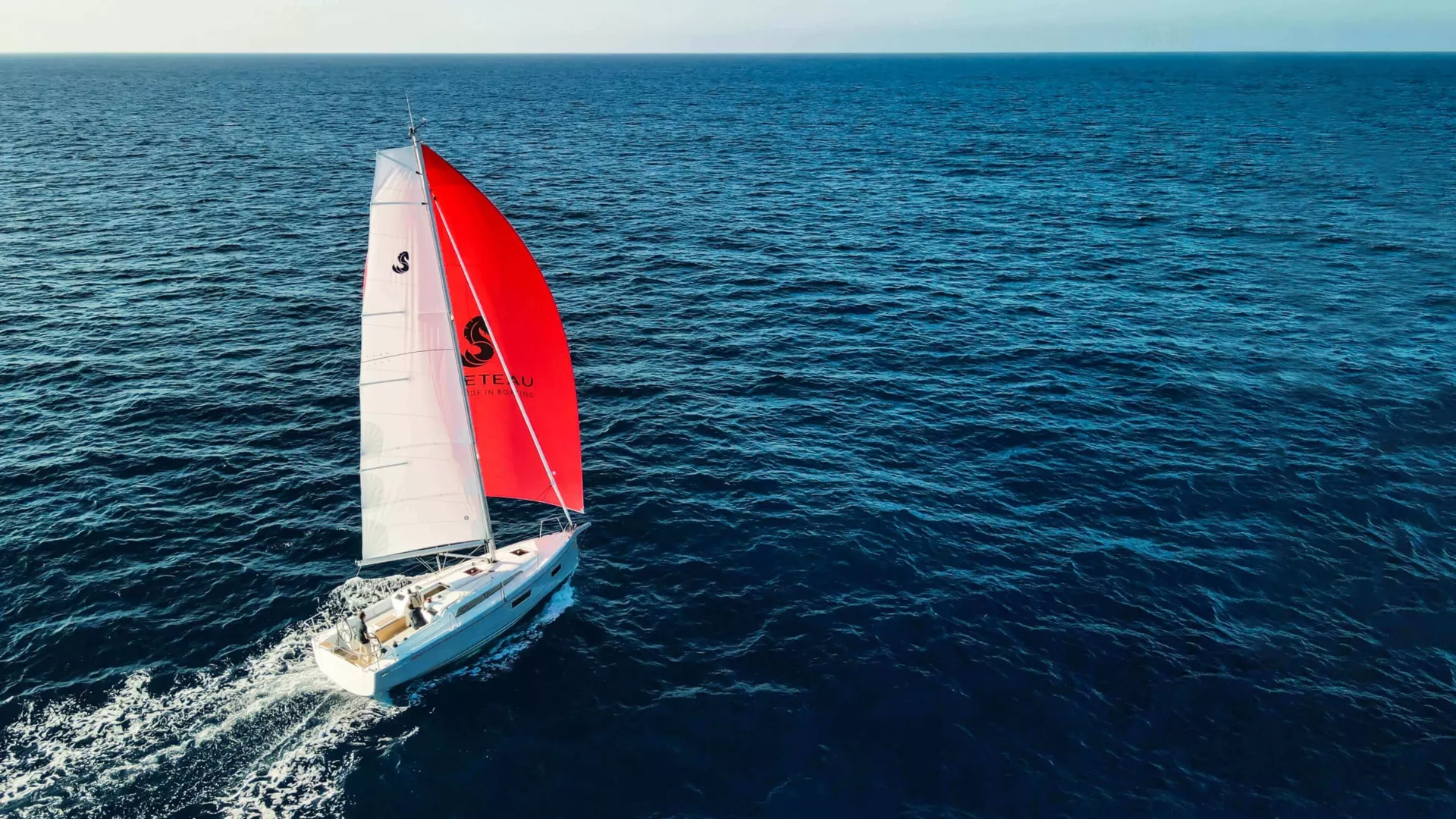
The Oceanis cruising yacht will tempt you to surf the seas, driven by the wind and your wanderlust, with the promise of simple comfortable sailing at all times. These stylish cruisers have clean lines and a flared hull, and they have become the gold standard of cruising. They are balanced and spacious , and they have been designed so that each passenger enjoys their time aboard and to make trips to sea about sharing fun in good company.
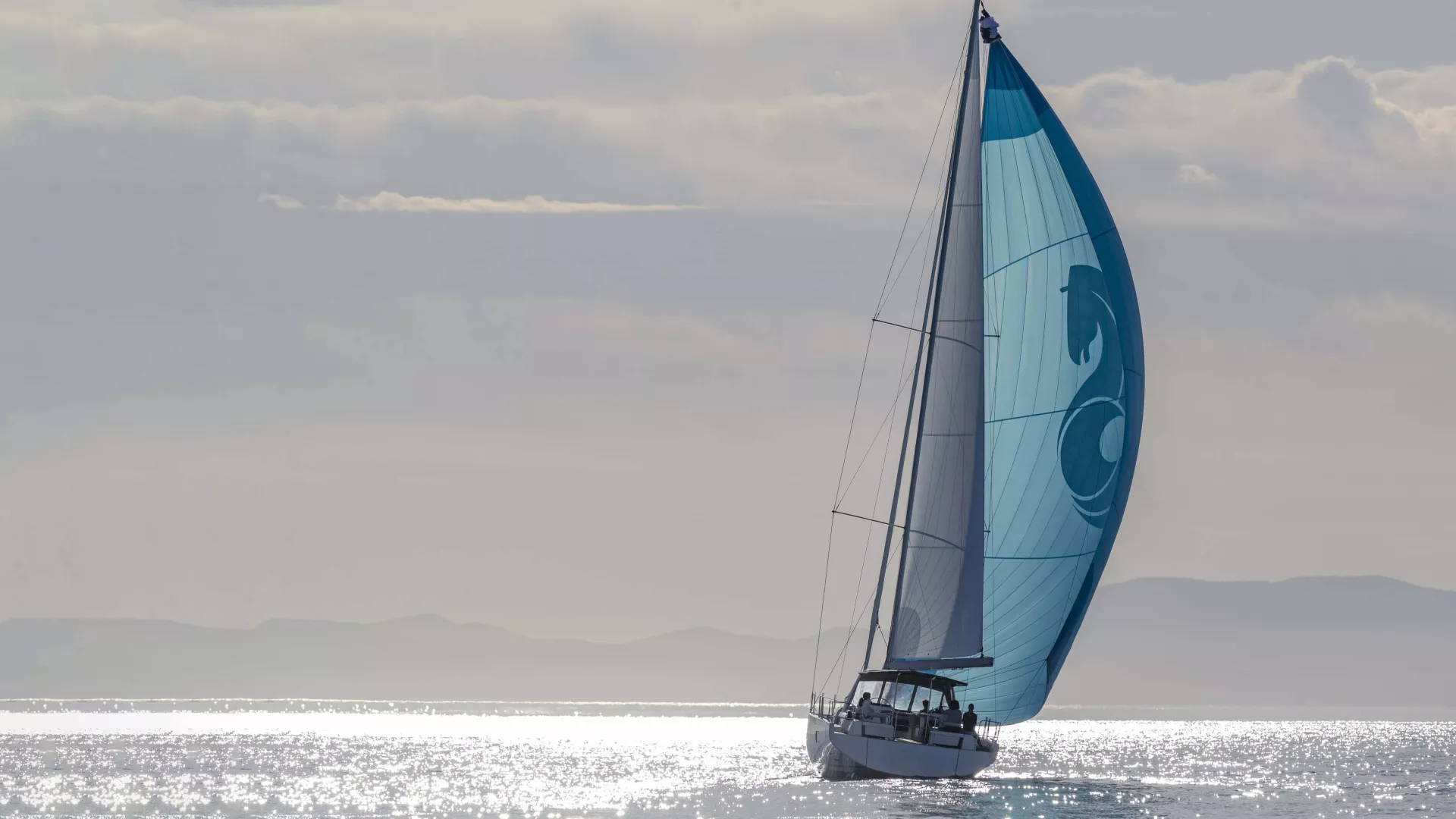
Oceanis Yacht
The slender lines of the Oceanis Yacht are very eye catching. The focus on every detail and their wonderful feel at the helm inspire dreams of long cruises at sea. These powerful bluewater long-distance cruisers are designed to be easily handled short-handed, making new destinations and long cruises possible. Both inside and on deck, the quality and comfort of the fittings make every moment you spend at sea so much more sophisticated.
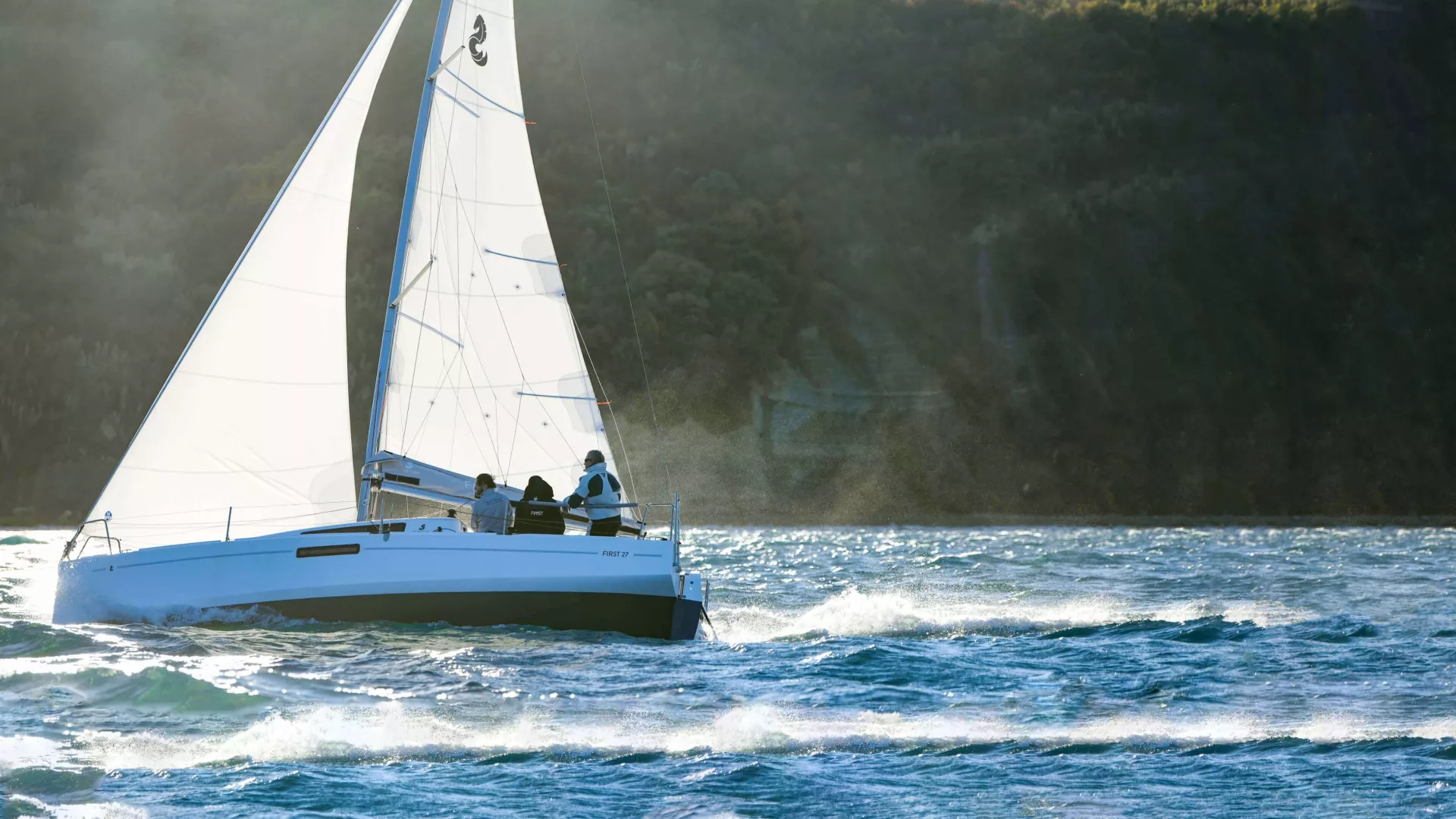
BENETEAU’s historical line places the emphasis on speed and design, and the pleasure is the same whether you are cruising or racing. This mixed use is specific to the First, which proudly boasts a taste for performance at sea, even in light air. Designed by well-known architects, the boat has left its mark on performance cruising, and it is now the gold standard.
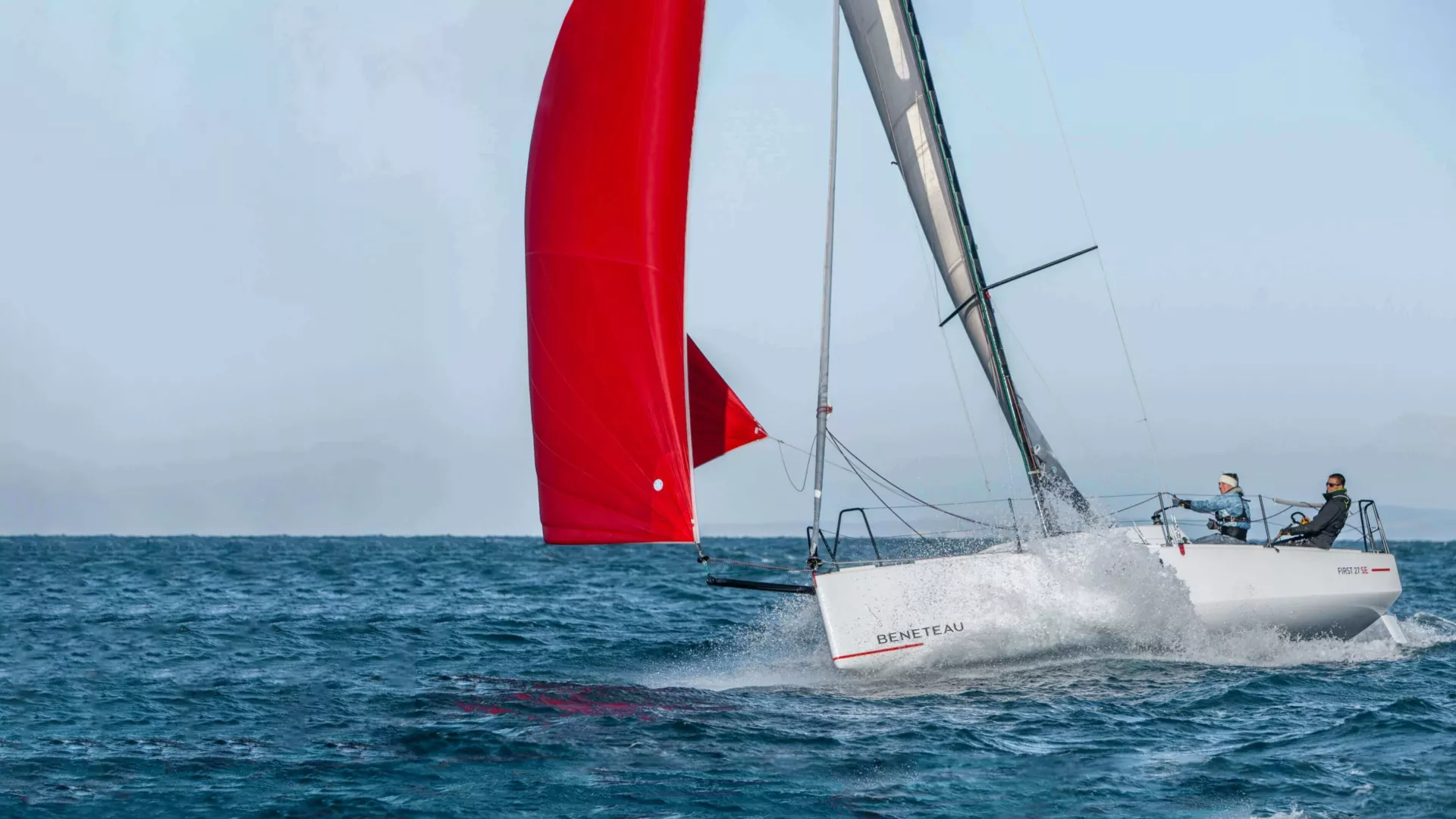
The First SE meets the challenge of providing keen sailors with a light, planing, high per-formance sailing yacht with great racing sensations, while guaranteeing safe sailing. Easy to trail, rig and launch, they facilitate moving to various sailing sites for regatta racing and can also be used to enjoy exploring and coastal cruising.
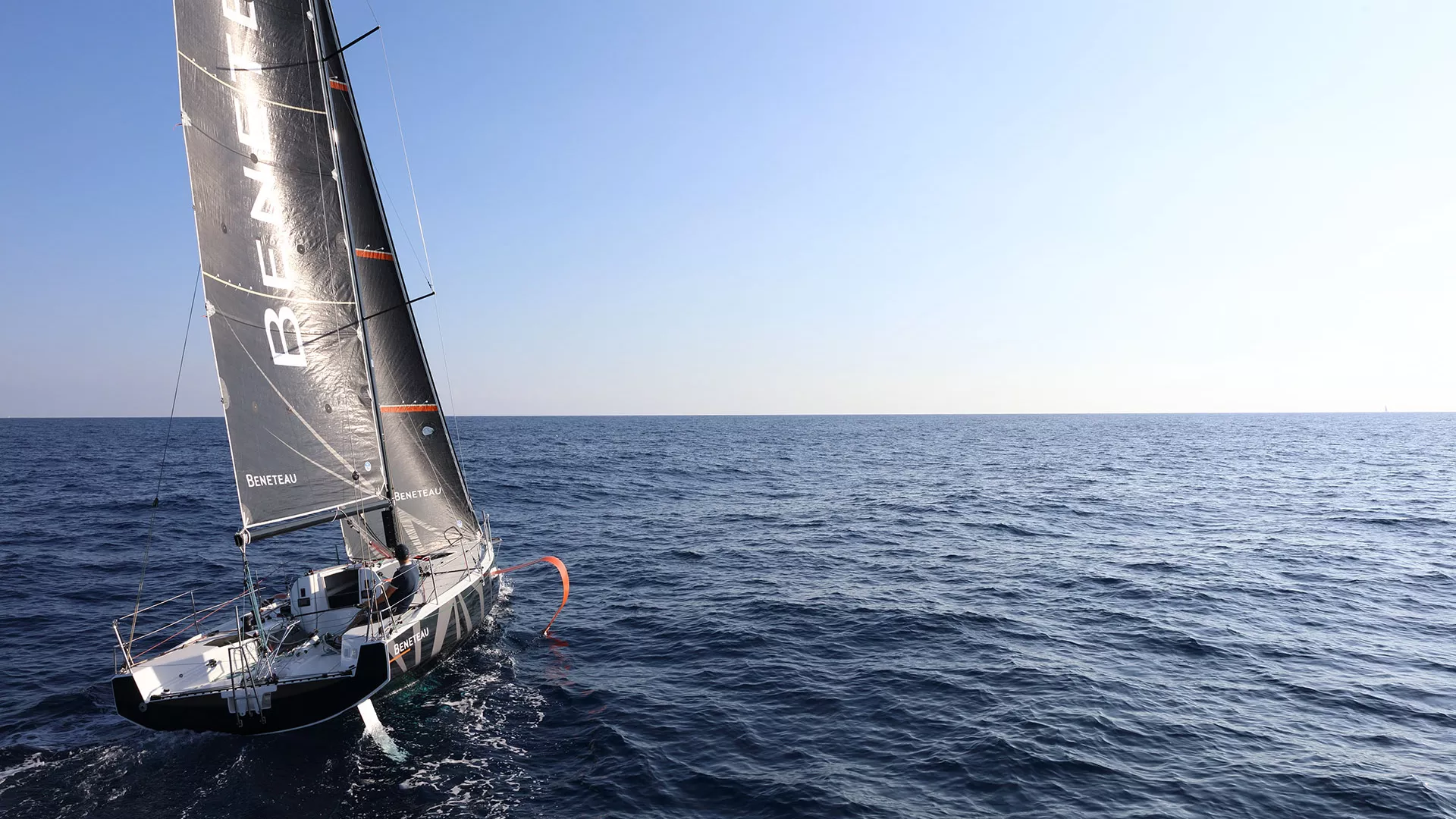
Legendary. The Figaro is an ode to excellence in offshore racing. The one-design sailing yacht was initially designed for the Solitaire du Figaro, allowing some of the greatest skippers to compete at sea on equal terms, much to their pleasure. The sailor makes the difference on a Figaro.
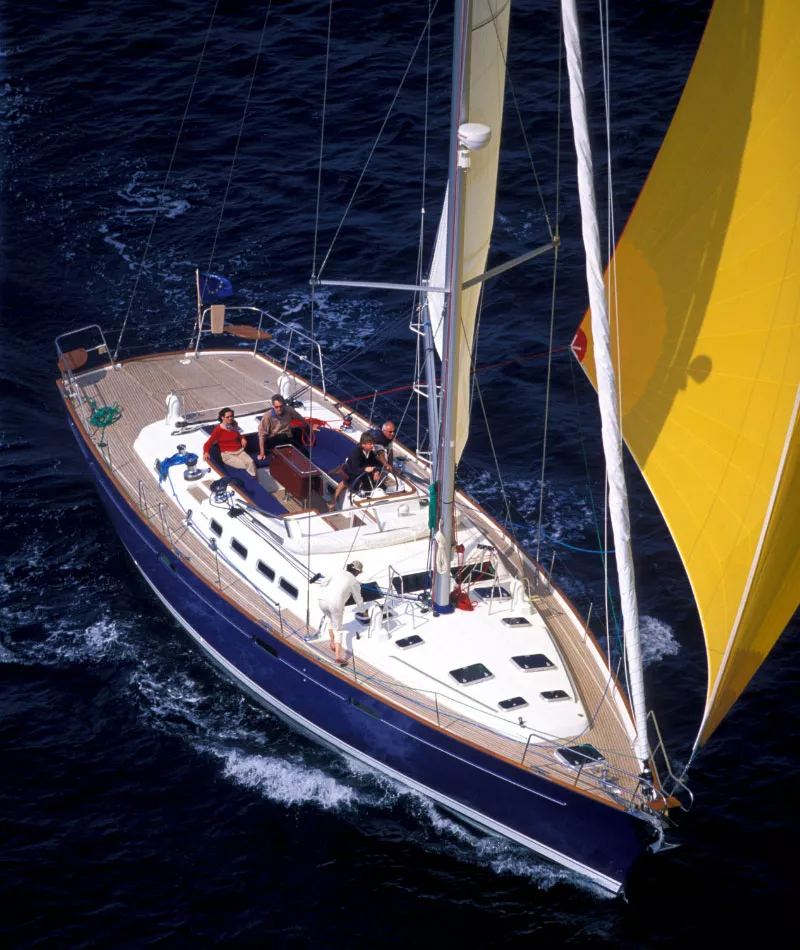
Old BENETEAU sailing yachts
“ Our history has been told many times in these last fifty years, but, to understand it, you need to grasp our company values, and return to its origins, since it is nothing but continuity and progression.” - Annette ROUX
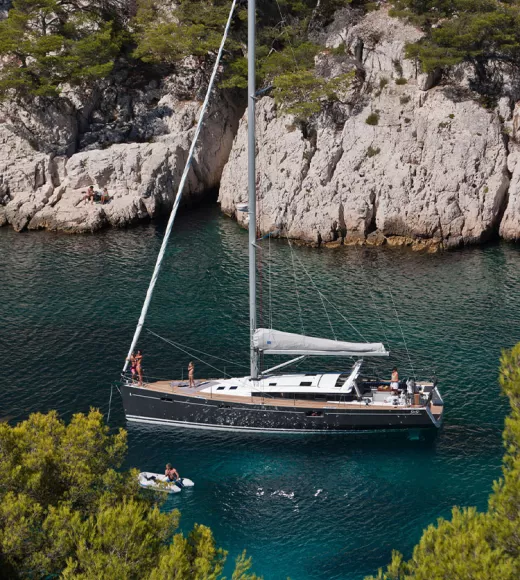
Discover all our sailing yacht and luxury yacht lines
Are you looking for a sailing yacht dealer ? Leisure boating, short trips, competitive sailing, regattas – whatever type of sailing you like, BENETEAU has a wide range of sailing yachts and luxury yachts , so there’s bound to be a boat to fulfil your dreams.
SAILING YACHTS FOR ANY TYPE OF SAILING
With over century’s experience in the field of naval construction, and in recreational craft since the 1960s , BENETEAU can now provide boats for all kinds of sailors.
OCEANIS: A BEST SELLER AMONG SAILING YACHTS
BENETEAU has made a name for itself in cruising with the OCEANIS line. With sailing yachts boasting ever more stable hulls, open deck plans, easier handling, equipment, and interiors lending themselves to customization, the OCEANIS line has become the international gold standard in cruising. There are eight models ranging from 31 to 60 feet.
FIRST LINE: ICONIC SAILING YACHTS
BENETEAU’s First line has also been in the spotlight for over 40 years. Now in its seventh generation, the sailing yachts are robust, easy to handle, and perfectly suited to sailors who love competitive sailing. The First sailing yachts are ideal for coastal trips, regattas and adventure raids.
FIRST SE RANGE: HIGH PERFORMANCE YACHTS
First SE - Seascape Edition encourages and empowers sailors to expand their comfort zone by joining competitive one-design racing and adventure sailing. It grows a community of owners linked by shared values and a drive to strengthen their sailing skills. Whether owners are racing against others in one-design classes or are engaging in adventure sailing, the First SE connects them to the elements and helps them experience nature in the most authentic way.
BENETEAU YACHTS:LUXURY YACHTS
BENETEAU is also there to help you buy a top-quality boat. The OCEANIS Yacht line delivers luxury sailing yachts that satisfy this requirement perfectly. The line comprises two luxury craft of over 50 feet, designed by renowned architects and designers. The same is true of the First Yacht 53 in the First line.
THE FIGARO BENETEAU: ICONIC OFFSHORE RACING SAILING YACHTS
BENETEAU sailing yachts are also ideal for racers and sailors who love offshore racing. The Figaro class has brought the French sailing community firmly into the spotlight, since the 1990s. Now in its third generation with the Figaro 3, the sailing yacht offers a truly memorable sailing experience. A distillation of technology and innovation, she is the result of a collaboration between the best experts of Groupe Beneteau’s teams and the designers Van Peteghem Lauriot-Prévost (VPLP), the architects behind the winners of the last two Vendée Globe races.
SAILING YACHTS SAILING THE FIVE OCEANS
This diversity has led to the BENETEAU brand being represented on all the world’s seas. But wherever they are, BENETEAU boats are easily recognisable for their taut lines, innovative design, robustness and performance. No doubt this will continue, since BENETEAU is constantly reinventing itself to provide ever more enjoyable, high performing, safe and user-friendly recreational craft. BENETEAU achieves this by making the most of current and future innovations such as ship control, dock and go, foils, etc.
Select your area and your language
- Chinese, Simplified
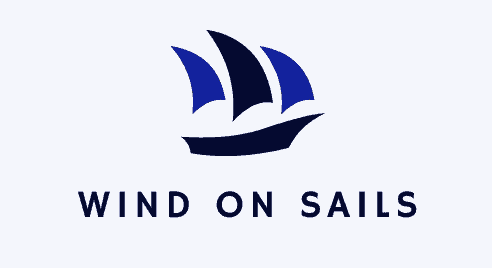
Yacht Sailing 101: A Beginner’s Guide to Embarking on Luxurious Adventures
- May 20, 2023
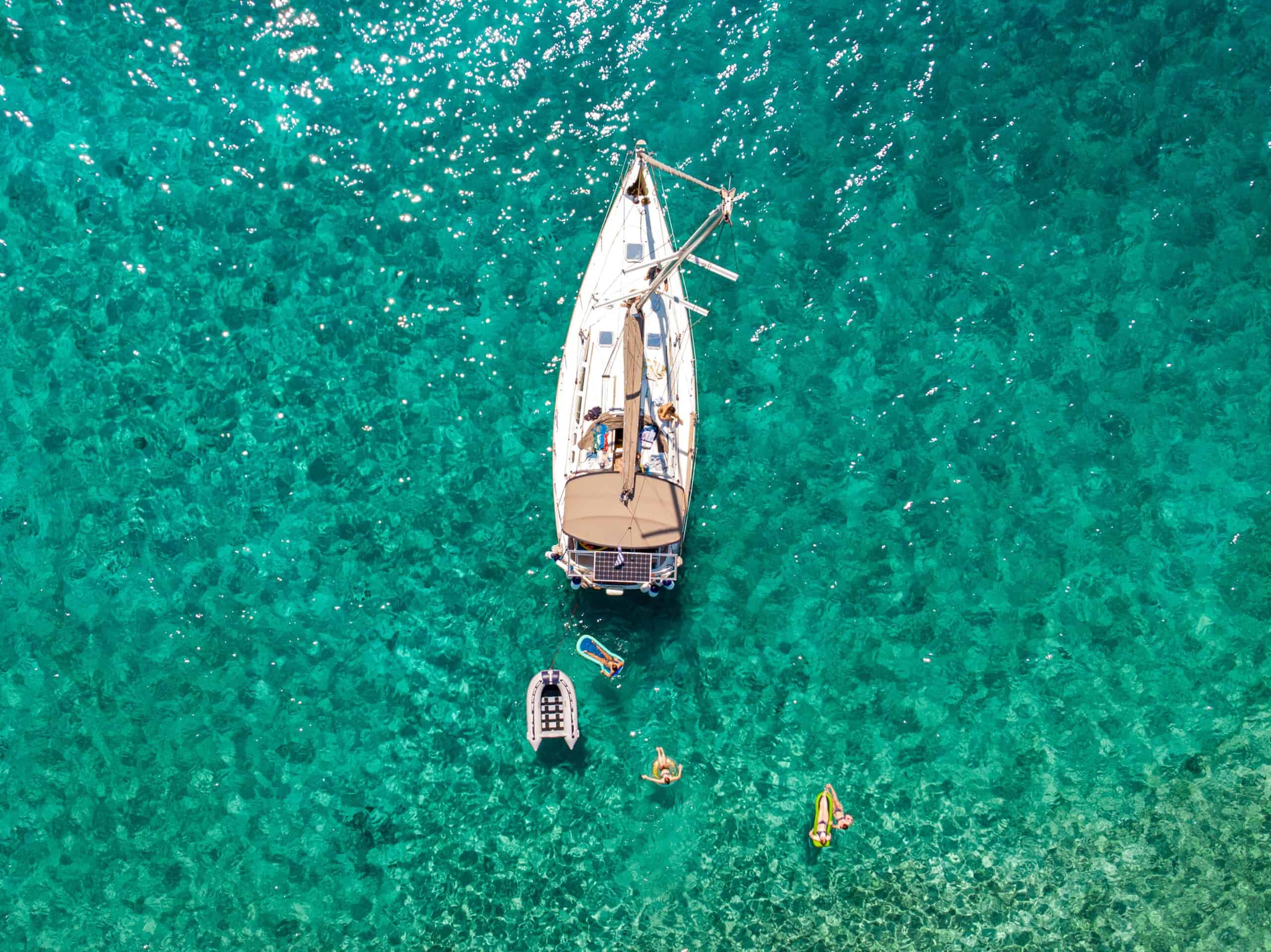
Ahoy, adventure seekers! If you’re ready to embark on a journey of luxury, freedom, and boundless exploration, yacht sailing is the perfect choice for you. In this beginner’s guide, we’ll delve into the world of yacht sailing and equip you with the essential knowledge to navigate the seas with confidence and style. Join us as we set sail on an unforgettable yacht sailing experience!
Table of Contents
Understanding yachts.
Yachts embody the pinnacle of opulence and sophistication on the water. These magnificent vessels offer a range of amenities and can vary in size, from intimate sailing yachts to lavish motor yachts. Familiarize yourself with the different types of yachts, including sailing yachts, motor yachts, and catamarans, to discover which one aligns with your preferences and sailing aspirations.
Choosing the Right Yacht Charter
Before setting sail, it’s essential to choose the right yacht charter. Consider factors such as the number of guests, desired destinations, budget, and preferred yacht features. Research reputable charter companies and compare their offerings to find the perfect yacht that meets your needs. Whether you opt for a bareboat charter or a crewed charter, selecting the right yacht is crucial for a memorable sailing experience.
Basic Yacht Sailing Techniques
While yacht sailing is associated with luxury, understanding basic sailing techniques is still important. Familiarize yourself with the yacht’s rigging, sails, and navigation equipment. Learn the fundamentals of hoisting and trimming sails, steering, and maneuvering the yacht. Basic knowledge of points of sail, wind direction, and sail trim will empower you to navigate the open waters confidently.
Safety Precautions on Yachts
Safety should always be a top priority while yacht sailing. Before departing, familiarize yourself with safety equipment and procedures on board. Ensure you have life jackets, flares, fire extinguishers, and first aid kits readily available. Familiarize yourself with emergency protocols and navigation rules to ensure the safety of everyone on board. Additionally, pay attention to weather forecasts and stay updated on any potential hazards.
Navigating with Charts and Technology
Navigation is a vital aspect of yacht sailing. Learn how to read nautical charts, identify buoyage systems, and plot your course. Familiarize yourself with GPS navigation and electronic chart plotter systems. Understanding how to use these tools effectively will help you navigate accurately and reach your desired destinations.
Yacht Etiquette and Environmental Responsibility
Yacht sailing comes with a responsibility to preserve the marine environment and respect other boaters. Practice good yacht etiquette by being mindful of noise levels, observing anchoring guidelines, and avoiding sensitive ecosystems. Dispose of waste properly and use environmentally friendly products on board. By practicing responsible yachting, we can all contribute to the preservation of our oceans.
Continuing Education and Yacht Sailing Communities
Yacht sailing is a lifelong learning journey. Consider enrolling in sailing courses or certifications to enhance your skills and knowledge. Join local yacht clubs or online communities to connect with experienced sailors, share insights, and participate in social events and regattas. Engaging with yacht sailing communities allows you to learn from others, exchange stories, and expand your network of fellow yachting enthusiasts.
Congratulations! You’re now equipped with the essential knowledge to begin the journey into yacht sailing. From understanding yacht types to mastering basic sailing techniques, and from practicing safety measures to navigating with confidence, this beginner’s guide has set you on a course for unforgettable experiences on the open seas.
So, cast off the lines, catch the wind in your sails, and immerse yourself in the captivating world of yacht sailing. Let the luxury, freedom, and sheer joy of yachting transport you to new horizons and create cherished memories that will last a lifetime!
Related Posts
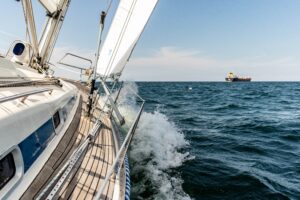
Understanding the Parts of a Sailboat: A Comprehensive Guide to Sailboat Anatomy in 2023
- June 10, 2023

Exploring the Different Types of Sailboats and Their Versatile Uses
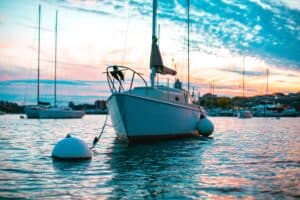
Keelboat Sailing 101: A Beginner’s Guide to Navigating the Seas with Stability
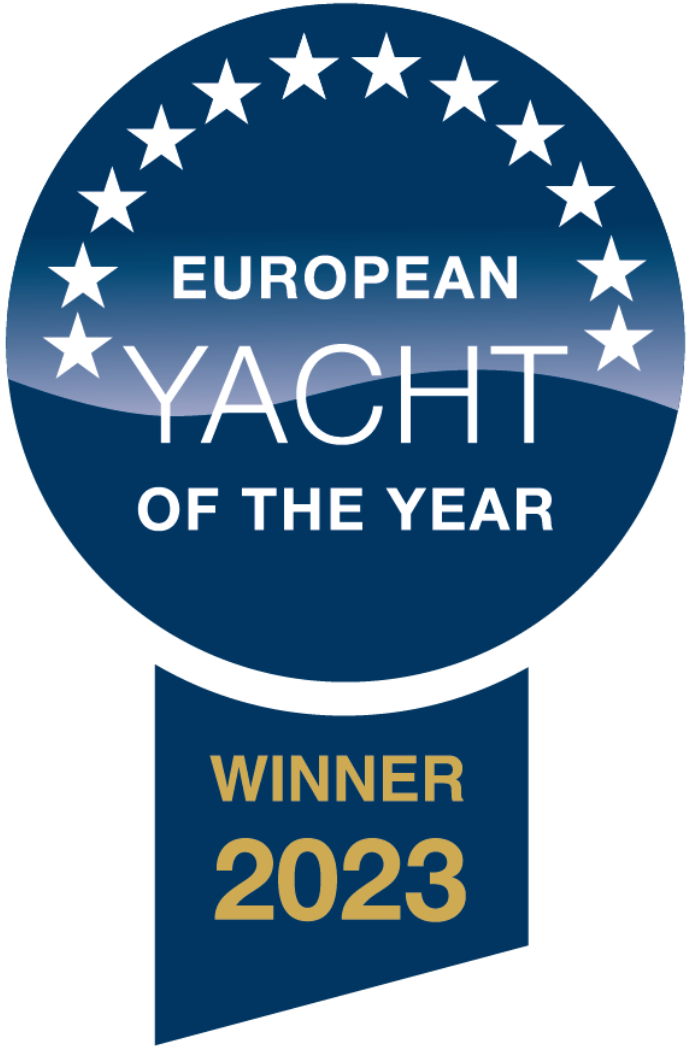
Winner of European Yacht of the Year 2023. The Oyster 495 is a new breed of 50 foot sailing yacht
Introducing the award-winning Oyster 495.
A luxury, bluewater cruiser with half a century of Oyster experience and innovation running through her every inch.
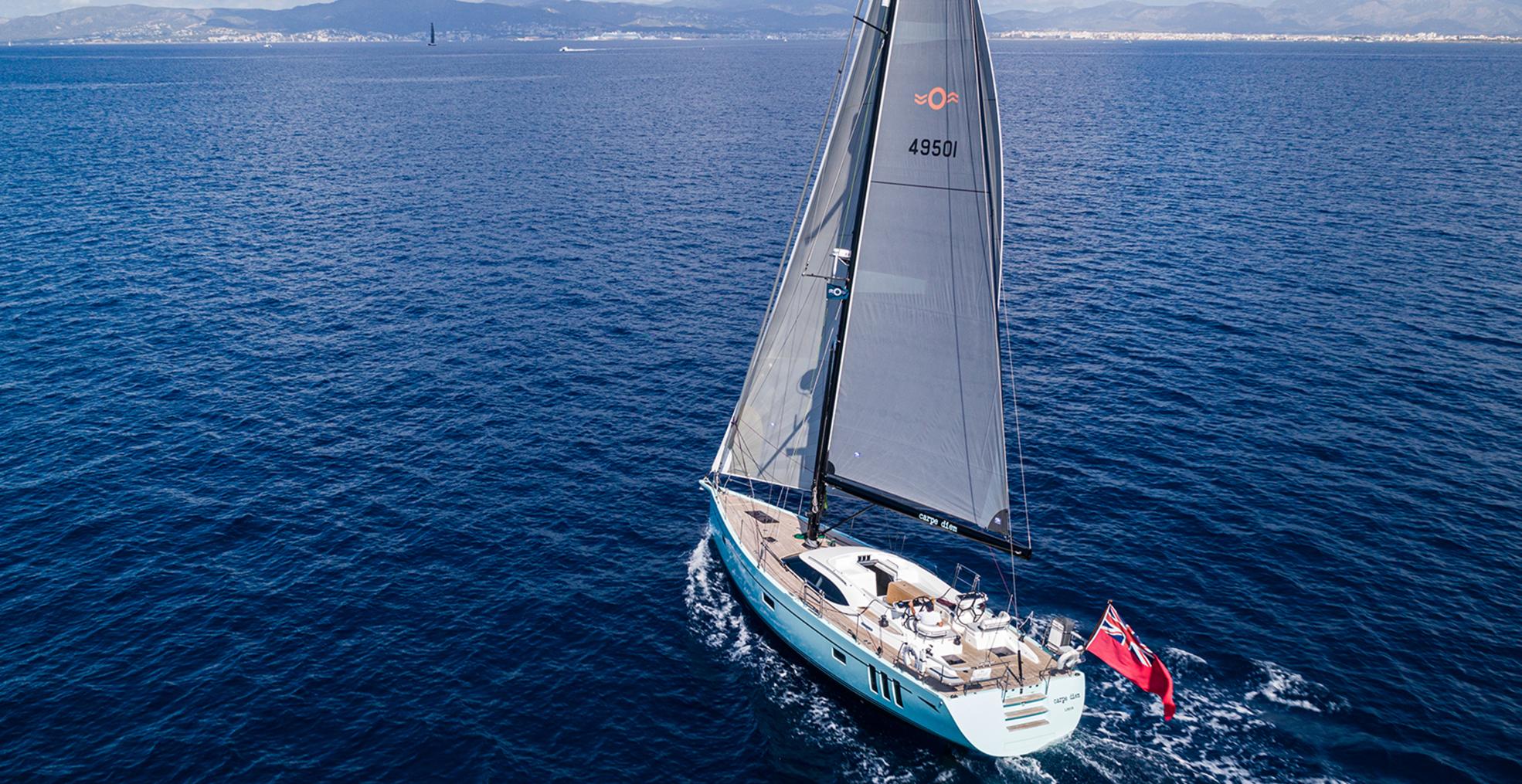
Effortless handling
The new Oyster 495 is a 50 foot yacht designed for ease of use and shorthanded sailing.
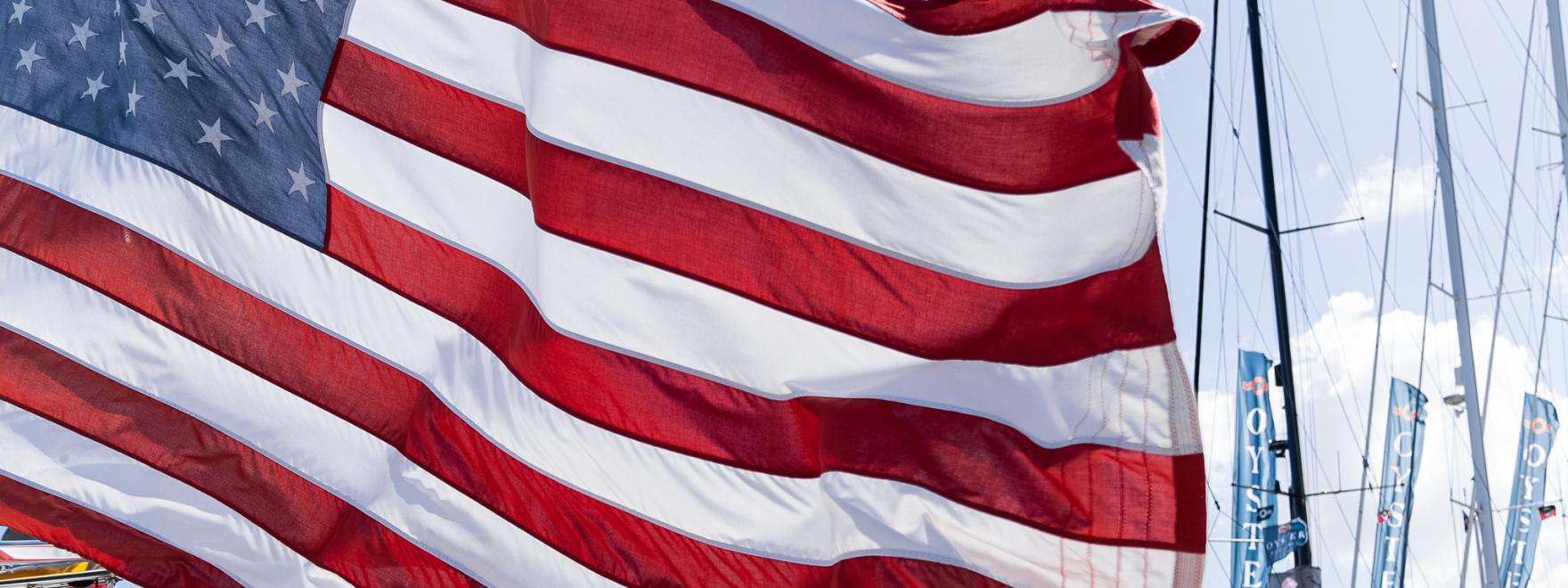
LOCAL EXPERTISE
For new yacht sales and our service operation in the Americas, visit our offices in the heart of the US East coast sailing scene, Newport, Rhode Island. We would be delighted to help.
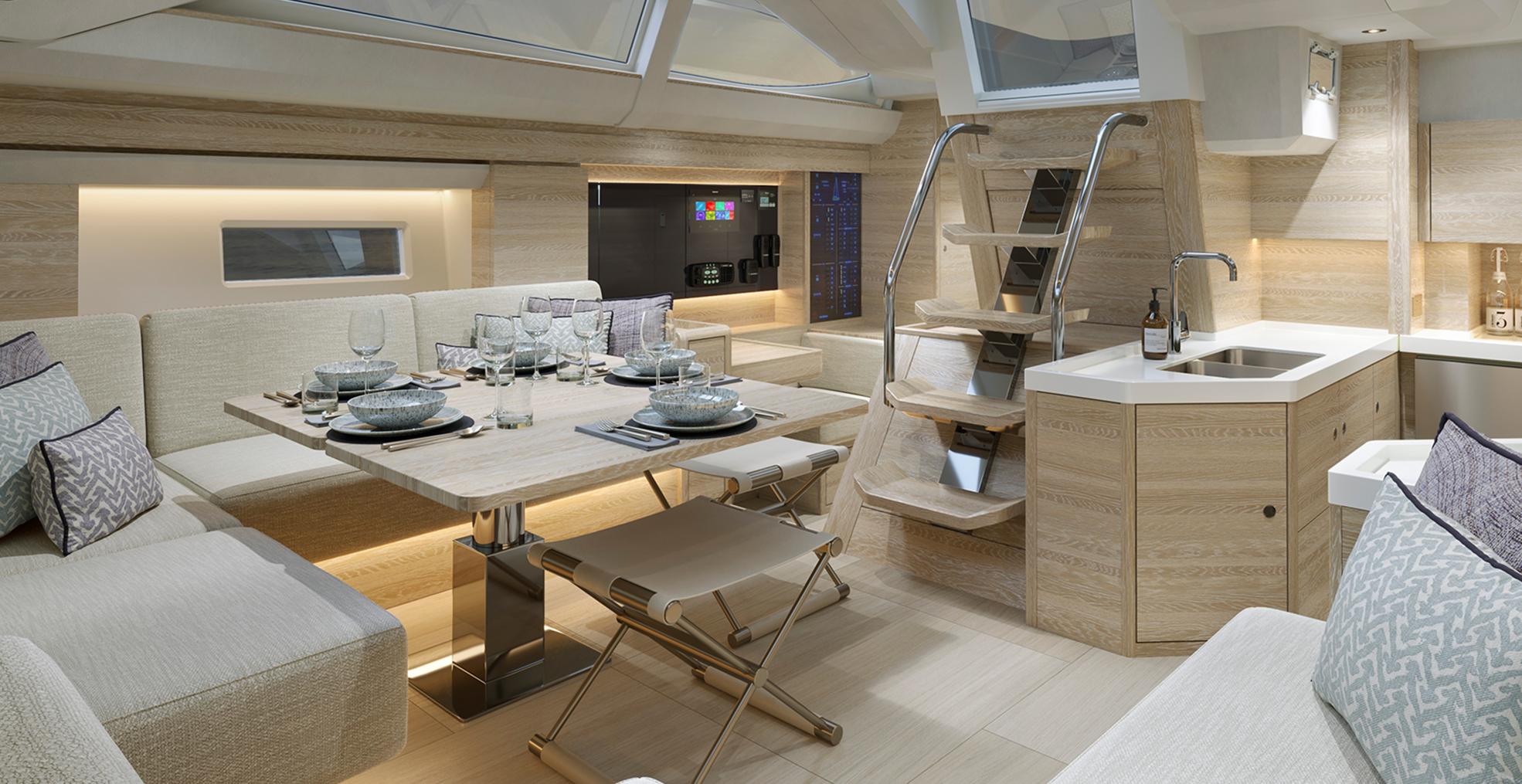
Distinctly Oyster
She embodies all the learning, insights and innovative features from Oyster’s larger models, intelligently integrated into this benchmark 50 foot sailboat.
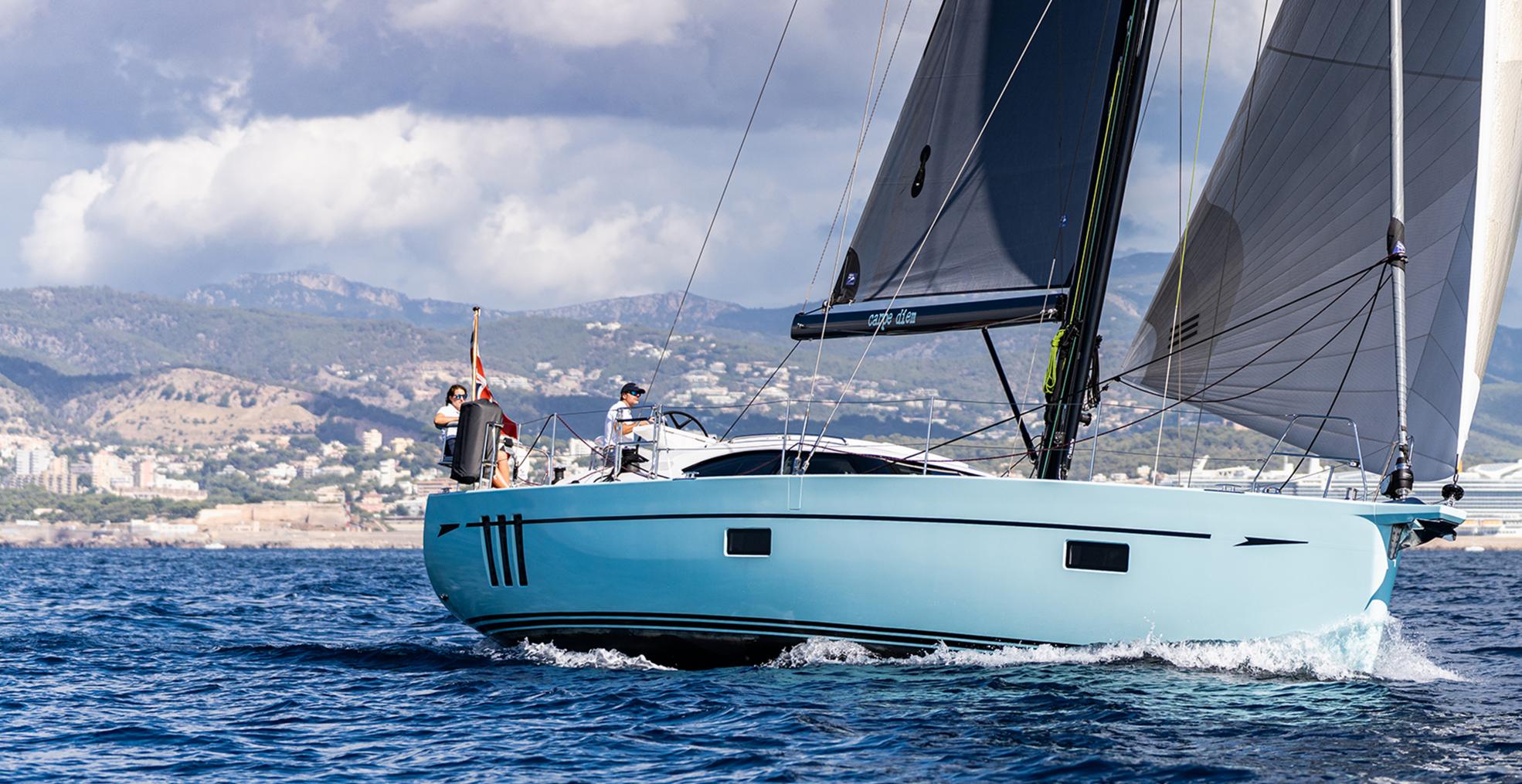
Equipped for adventure
A true liveaboard bluewater cruiser, equipped to take you anywhere in luxury, comfort and safety.
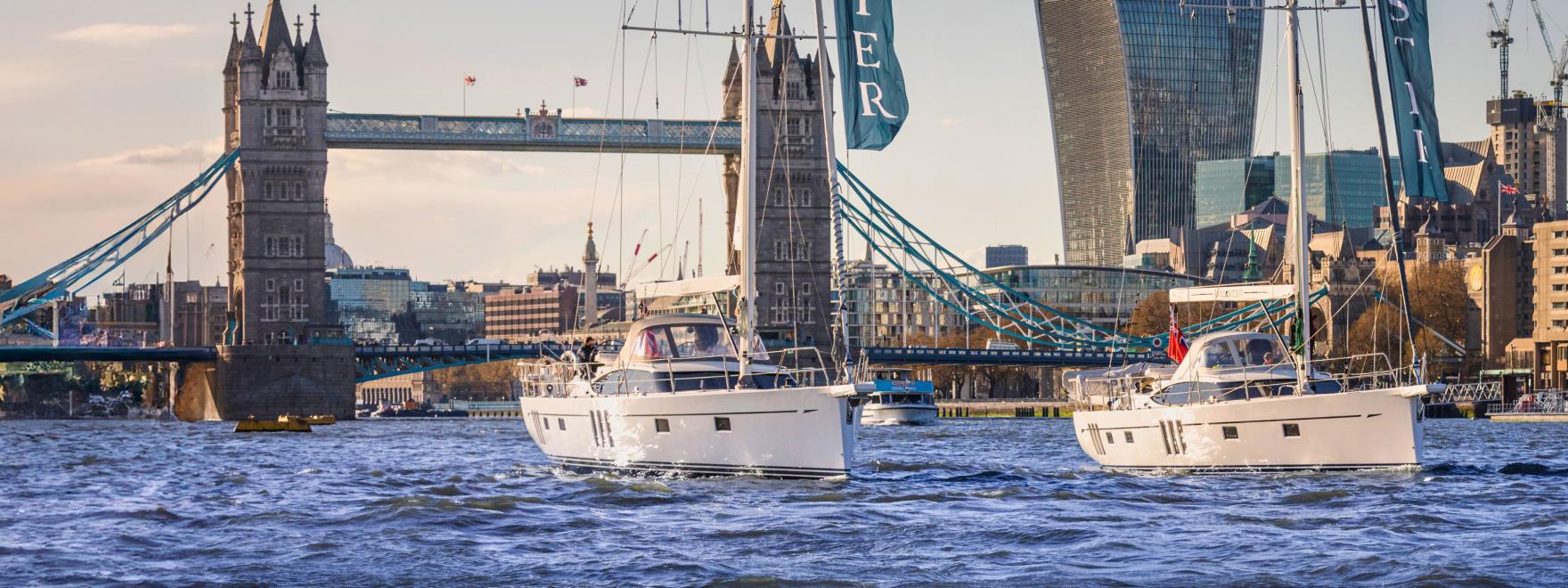
Join us at our London Private View at St Katharine Docks, 24-28 April 2024, to see the Oyster 495, 565 and 595
Displaying all the hallmarks of Oyster’s exquisite craftsmanship and meticulous attention to detail, the exceptional build quality of the Oyster 495 means she is built to last a lifetime.
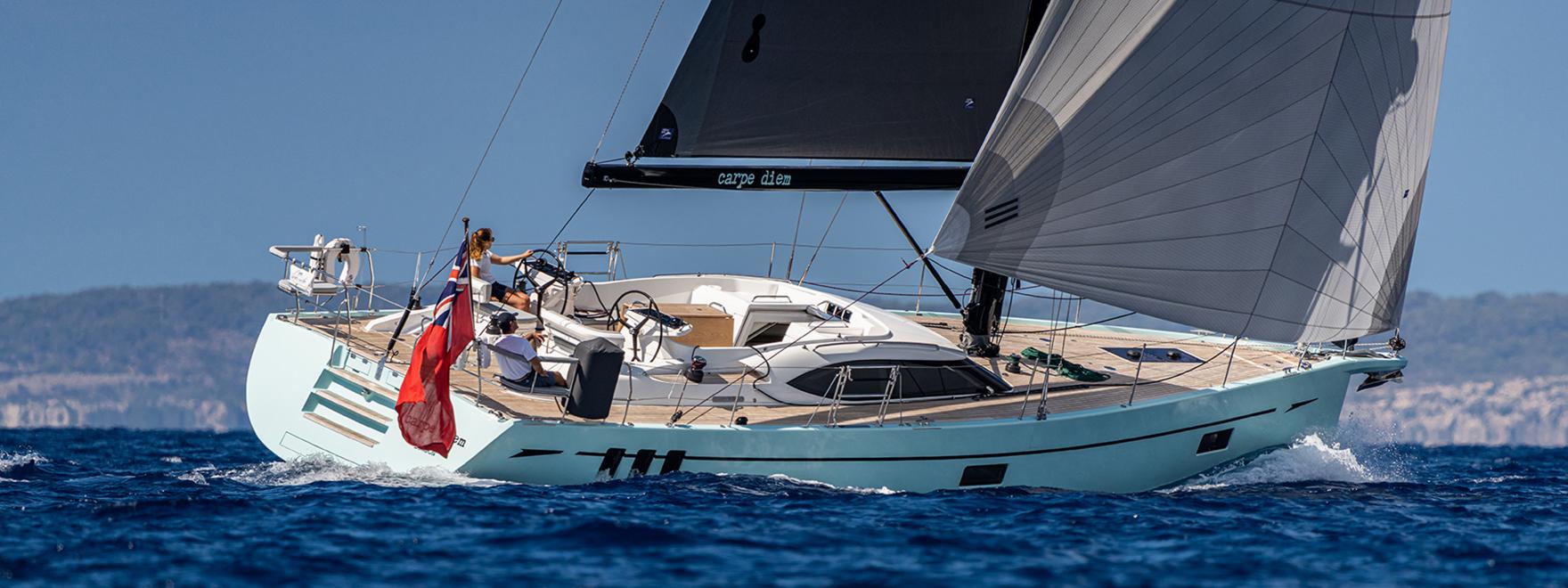
BUILDING THE 495
Join double Olympic gold medallist, sailor and respected journalist, Shirley Robertson, as we build and sail the first Oyster 495.
Every inch an Oyster, the new Oyster 495 features instantly recognisable design cues – deck saloon, seascape windows and flush decks, combined with exceptional sailing performance.
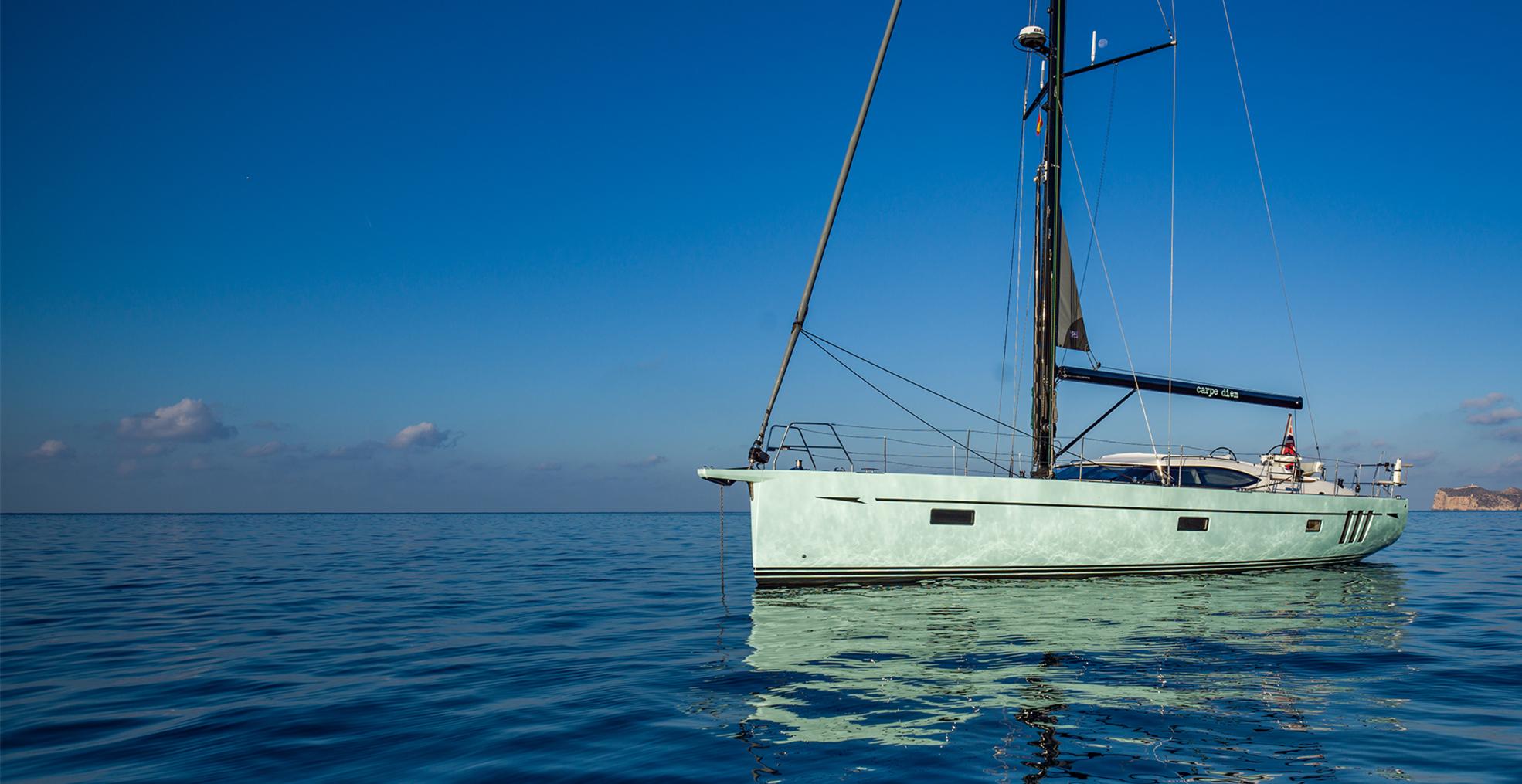
Unmistakably Oyster
The latest collaboration between humphreys yacht design and our in-house design studio, the new 495 50 foot sailing yacht is an evolution of five decades of iconic oyster design cues..
Her clean hull lines and wide beam aft are the foundation for the outstanding space and capabilities of the Oyster 495. She incorporates many of our big yacht features in a compact 50 foot yacht. Instantly recognisable as an Oyster, the Oyster 495 features our pioneering deck saloon, protected cockpit and helm stations, wraparound and forward-opening saloon windows. Flush decks, signature triple vertical seascape windows, foredeck skyscape windows, a powerful plumb bow and extended bowsprit complete the look.
We were the first boat builder to create a truly ergonomically designed cockpit and helm positions, with sprayhood and optional bimini for additional protection. Details like the cockpit table, with optional built-in refrigerated drinks locker, that comfortably seats up to eight people, is just one of the many triumphs of Oyster design thinking.
The Oyster 495 consistently delivers powerful, responsive and rewarding performance in safety and comfort.
Nine knots is her happy place and her well-balanced, stable wide-beamed hull form gives you confidence to keep the sails up in almost any conditions. Twin rudders make her light and agile on the helm, offering fingertip control even in the most boisterous seas. Her low centre of gravity keel offers substantial displacement for enhanced stability and handling, and she moves easily in cruising trim. Carrying significant sail power, you are guaranteed consistently fast cruising speeds and the optional sprayhood and bimini provide excellent protection from the sun, whilst improving all-round comfort.
This 50 foot sailboat for sale offers the range of innovative automated sailing technology. This includes in-mast furling with push-button controls and B&G instruments, all operated from the helm positions, making her the perfect choice for couples or young families.
The Oyster 495 features lots of space to relax and share good times with friends and family.
Her wide beam offers unexpected returns in space, both above and below decks – something you will not find on any other 50 foot sailboat for sale. The beautifully styled centre cockpit is perfect for entertaining up to eight people for alfresco dining. The aft pushpit seats are a great place to see all the action under sail. The wide teak deck at the stern and flush foredeck offer generous entertaining and sunbathing spaces.
The transom houses an innovative, push-button operated, cassette boarding/bathing platform. A choice of subtle mood lighting and integrated audio speakers let you set the tone for entertaining guests under the stars.
New generation interiors feature modern styling, integrated technology and equipment for truly luxurious entertaining and living spaces.
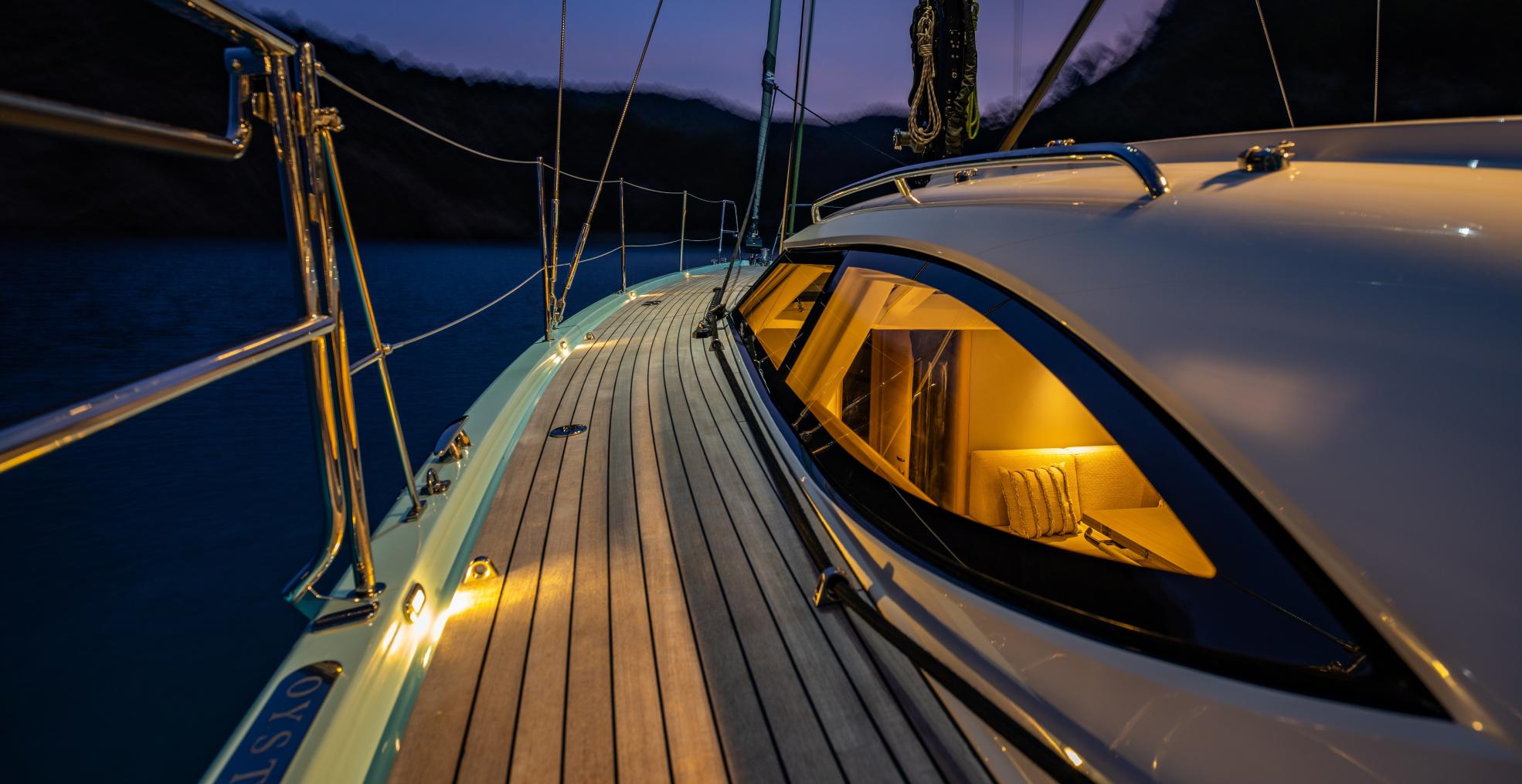
Contemporary luxury and comfort
The oyster 495 benefits from our new generation luxury, contemporary interiors that elevates her above the best 50 foot yachts..
With four interior designed themes, 495’s interiors set a new standard in her class. The well-equipped, seaworthy, u-shaped galley, saloon and cabins are well-proportioned, comfortable and luxurious. Her wide beam aft offers unexpected space compared to any other 50 foot yacht for sale.
She is eminently practical, making her perfect for liveaboard adventures. Intelligent interior space planning, combining insights and the acclaimed craftsmanship from our larger yachts, makes use of every inch of hull volume. The tasteful choice of materials, fabrics and integrated technology throughout, along with modern styling, creates truly luxurious entertaining and living spaces. The impressive owner’s cabin, with its deep luxury mattress, has excellent headroom and signature triple seascape windows, creating an amazing feeling of space and light throughout the new Oyster 495. Our new mood lighting system creates a perfect interior environment.
Like all our yachts, the new Oyster 495 is handcrafted by master craftspeople with a meticulous attention to detail, and a deep sense of pride and passion.
The learnings of half a century of designing and building bluewater cruisers feed into every detail, and the insights of our owners, skippers and crew, sailors and our own team help fine-tune every aspect of the design and build. The result is a unique combination of design, technology, engineering and hand-crafted build quality. Beautiful hardwoods run throughout every inch of this exquisite 50 foot sailboat, in everything from hand-built furniture to intuitively placed grab rails. This focus on detail reveals itself in the beautiful, hand-crafted cabinetry and the easily accessible, carefully labelled cables and pipework that run behind the scenes to make maintenance tasks simple.
The Oyster 495 is a truly connected 50 foot yacht with all the latest technology you need to stay in touch, however remote your location.
Not only does it make her an ideal liveaboard yacht, but it also makes her a work-aboard yacht. Every system is chosen for its ruggedness and fitness for purpose. The chart table is a technology hub, featuring an optional, innovative, foldout, integrated PC; lift-top desk; plotter; VHF and SSB radios; power management; generator control; switchboard; and plenty of power sockets. Oyster’s proprietary digital switching system – Oyster Command™ – lets you monitor and control various systems over a digital network and touchscreen. Optional WIFI can be accessed through the latest satellite technology, or 4G/5G cellular antenna when close to onshore radio masts. Entertainment systems are seamlessly integrated, with a concealed saloon TV and audio running throughout the boat.

The joy of Oyster ownership
There is more than just pride on offer when it comes to owning an Oyster 495. Every new Oyster comes with a comprehensive warranty, personalised care, access to our global service network, unrivalled support, life-changing experiences and so much more.
On an Oyster the world is yours.
OYSTER OWNERSHIP
Ownership benefits rarely experienced in marine
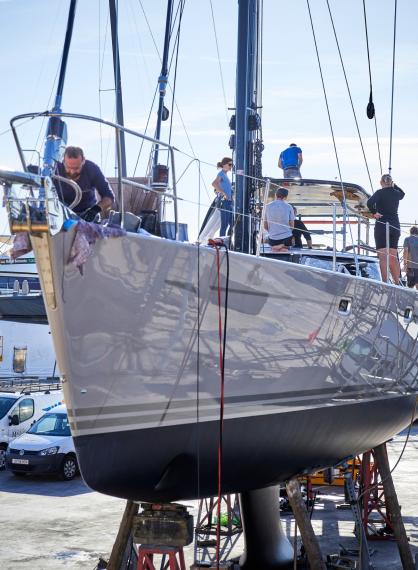
Discover the 495 in detail.
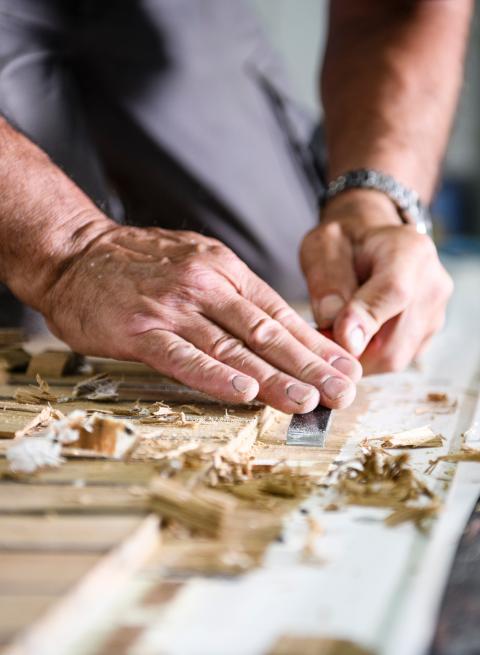
QUICK LINKS
More information
TECHNICAL DETAILS
Specifications & features
Electric in-mast furling system.
The in-mast furling system takes automation and effortless shorthanded sailing to another level.
Electric winches
Push-button control with electric Lewmar winches in sleek, black anodised finish.
Bathing platform
The innovative, automated cassette bathing platform is ideal to access ocean swimming, boarding a dinghy or stern access when berthed. It features a sturdy boarding ladder and integrated freshwater shower on the transom steps.
B&G Navigation package
The standard B&G navigation system displays boat speed, wind and depth information.
Master cabin with Seascape windows
An impressive full width owner’s cabin is completed by Oyster’s signature triple Seascape windows. These create a feeling of light and space, with exceptional ocean views.
Touch screen controls
Oyster Command™ digital switching system controls everything from on board entertainment and lighting to all your main systems, utilities and security, through touchscreens at the helm and chart table.
Wood options
Choose from a selection of wood themed interiors, including shades of sustainable sourced oak and walnut.
Extensive on deck stowage
A full width lazarette and separate sail locker provide ample storage for all your bluewater adventure kit, sails, rigging and mooring gear.
Flush Flexiteak decks
With a beautiful fine grain teak finish, the sustainable synthetic Flexiteak deck is 30% lighter than traditional teak, extremely hard wearing and retains it look with minimal maintenance.
Opening saloon windows
Oyster’s unique, deck saloon forward opening windows provide excellent ventilation, allowing fresh air to circulate freely through the yacht while at anchor or under sail.
DNV GL hull certification
DNV GL carry out stringent quality checks throughout the build of the Oyster 495 hull to certify the materials and construction reach the highest standards of extreme strength and durability.
Take advantage of shallow-draft cruising grounds and remote anchorages, with a draft of 1.83m / 6’0”.
Retractable bow and stern thrusters
Sleipner Side-Power retractable bow and stern thrusters make it simple and safe to manoeuvre in and out of tight marina berths.
Entertainment package
Choose from an optional range of integrated electronic and AV systems to suit your personal preferences.
Saloon day bed
The multifunction saloon table can be raised and lowered to create a comfortable day bed, perfect to relax on and enjoy the integrated widescreen TV.
Hull colours
Personalise your Oyster 495 with alternative coloured hull, mast and sails. See our colour picker for inspiration.
Air conditioning
Keep the interior at the perfect temperature with air conditioning (and generator) that cools and heats. Controls in each cabin allow guests to adjust the temperature based on their personal requirements.
B&G upgrade package
Upgrade the standard B&G navigation package with the additional instrumentation, communication equipment and autopilot package.
Flush teak decks
Extensive sustainably sourced, quarter-sawn, full-depth teak ensures maximum longevity and lifespan of our hand-laid teak decks. Smooth and natural underfoot, they look stunning.
Pushpit seats
For the best seats aboard, the optional pushpit seats provide great views and the perfect spot for sundowners after a memorable day’s cruising.
Enjoy 100 litres of fresh, homemade water per hour with a reliable Dessalator Duo watermaker with automatic controls and manual override.
Add davits to the stern deck for a practical dingy stowage solution when cruising and fast, efficient access when exploring at your destination.
Plans and interior layouts
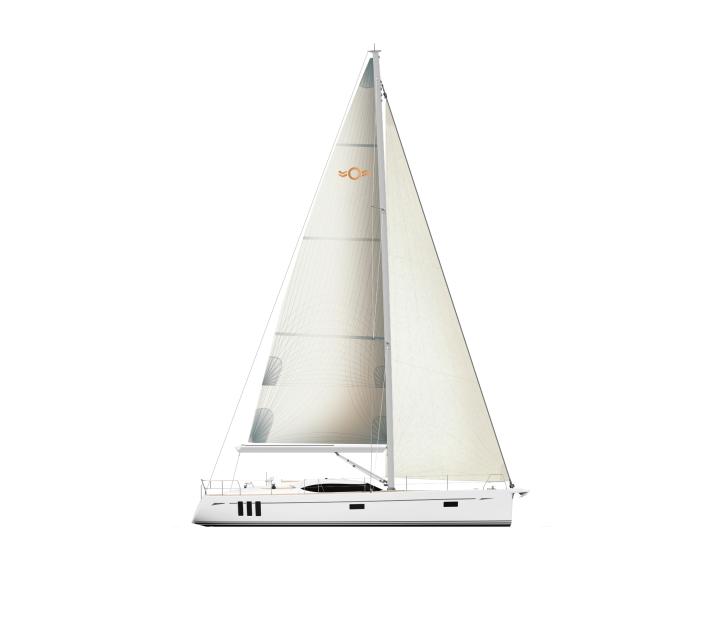
Colour inspiration
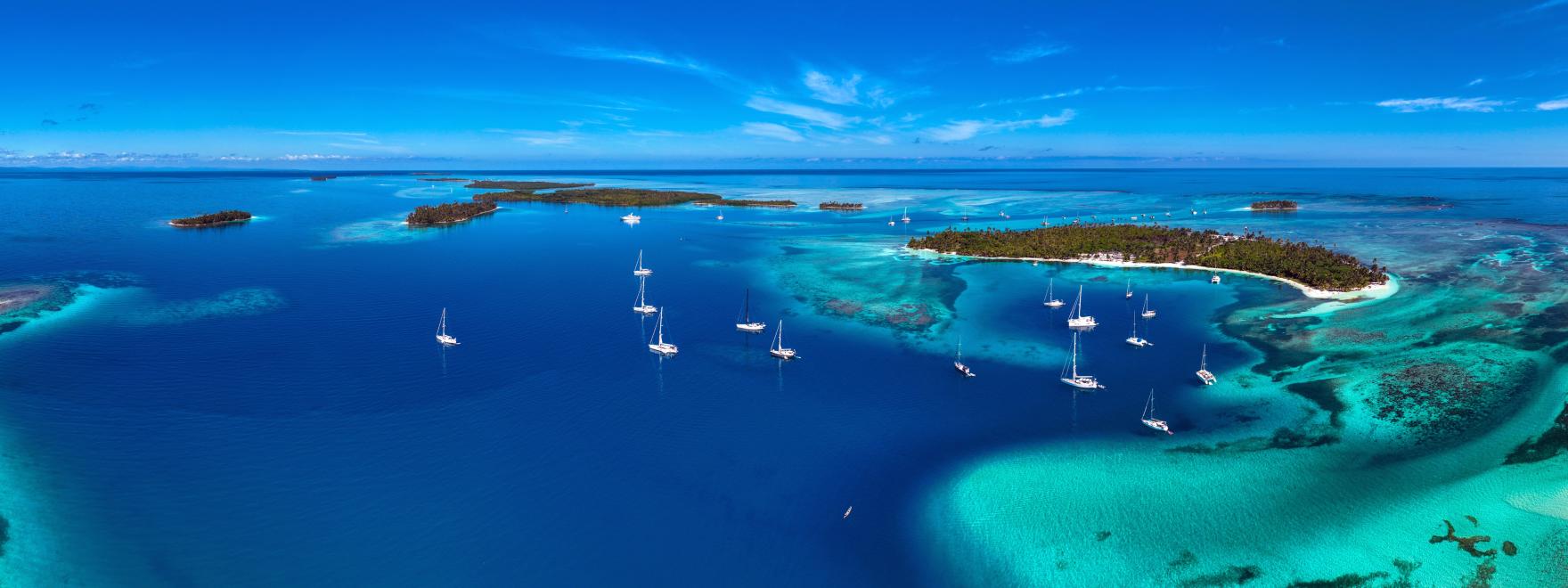
Entries open for the Oyster World Rally 2028-29. Embark on the sailing adventure of a lifetime
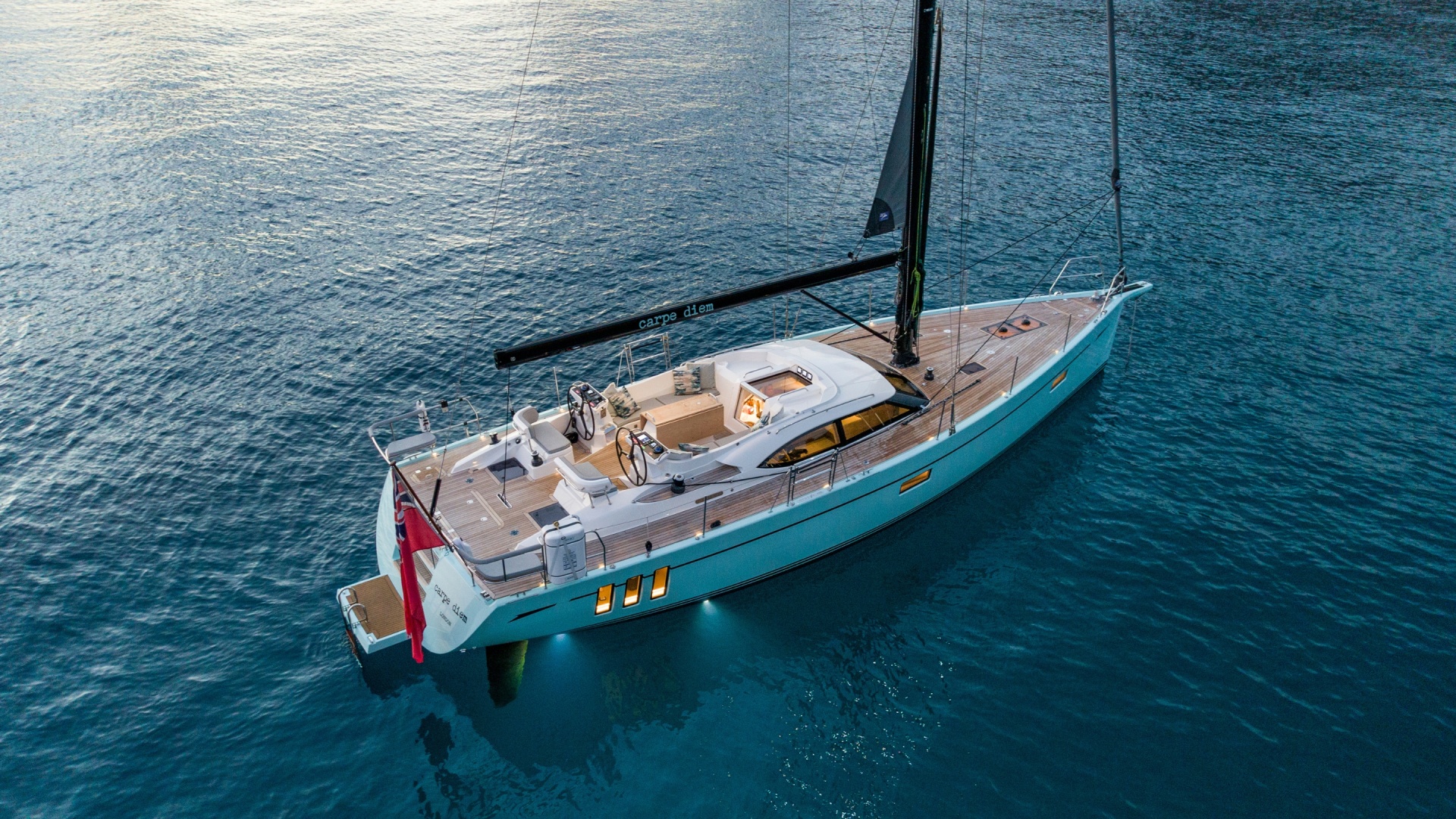
EXPERT OPINION
Independent reviews of the Oyster 495. Find out what the experts have to say.
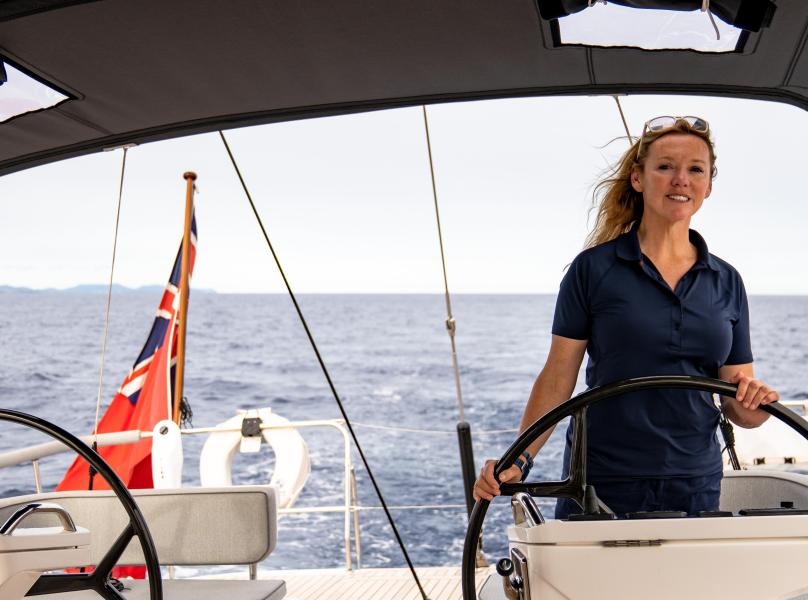
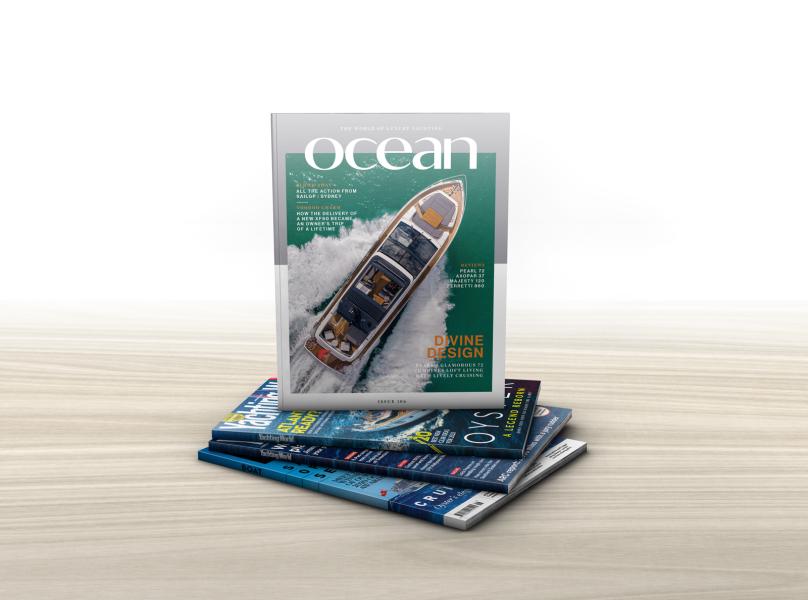


AWARD WINNING
Oyster 495 wins European Yacht of the Year 2023
The Oyster 495

Expert opinion
495 on test with Toby Hodges

Configure your 495
Create your dream Oyster 495 using our yacht configurator

Building the 495
Follow the build with double Olympic gold medallist Shirley Robertson
The Oyster Fleet
Explore other models

An award winning sub 60 foot bluewater sailing yacht for all oceans.

The new Oyster 595, a 60 foot sailing yacht capable of great things.

A versatile sub 70 foot sailboat designed for the adventurous at heart.
Sign up to our newsletter
Be the first to hear about new launches, exclusive events and all things Oyster
© 2024 OYSTER YACHTS

OYSTER WORLD RALLY
The Oyster World Rally 2028-29. Embark on the sailing adventure of a lifetime. Entries open 18 June 2024

The new 565 Series II
The pursuit of perfection continues

Explore the benefits that come with taking ownership of a new Oyster, and becoming part of the family

GRAND TOURING
The new oyster 885gt revealed. watch her in action.

LUXURY CHARTER
Experience exhilarating sailing, luxury and style on an oyster charter. personal, exclusive and uniquely oyster.


Join Oyster Brokerage at the Palma International Boat Show, 25-28 April 2024. Book your tour today
Oyster world rally.

Follow the Oyster World Rally 2024-25 fleet live
Winner of European Yacht of the Year 2023. She sets a new 50 foot bluewater benchmark, offering a stunning combination of sailing performance, comfort, safety and luxurious living space.

Heralding a new generation of Oysters, this 60 foot bluewater cruiser is a sailing yacht for all oceans. Practical and well-provisioned for long distance sailing or cruising in coastal waters.

The much-anticipated Oyster 595 is well-proportioned and extremely versatile. Offering exciting, customised build options with no compromise, she is capable of great things.

A versatile sub-70 foot sailboat offering the perfect balance of size and practicality. She can be sailed shorthanded effortlessly or take a full crew and up to eight friends and family.

This long range 75 foot cruising yacht is designed for very big adventures. A joy to sail yourself, she also boasts dedicated crew quarters.

Oyster 885SII
An exhilarating 90 foot sailing yacht, delivering comfort and safety with uncompromising performance. She is capable of taking you anywhere in the world effortlessly, in luxury and style.

Download brochure
First name *
Last name *
Phone number *
Country/Region *
Attach CV *
Attach covering letter
Current occupation
LinkedIn profile


The global authority in superyachting
- NEWSLETTERS
- Yachts Home
- The Superyacht Directory
- Yacht Reports
- Brokerage News
- The largest yachts in the world
- The Register
- Yacht Advice
- Yacht Design
- 12m to 24m yachts
- Monaco Yacht Show
- Builder Directory
- Designer Directory
- Interior Design Directory
- Naval Architect Directory
- Yachts for sale home
- Motor yachts
- Sailing yachts
- Explorer yachts
- Classic yachts
- Sale Broker Directory
- Charter Home
- Yachts for Charter
- Charter Destinations
- Charter Broker Directory
- Destinations Home
- Mediterranean
- South Pacific
- Rest of the World
- Boat Life Home
- Owners' Experiences
- Interiors Suppliers
- Owners' Club
- Captains' Club
- BOAT Showcase
- Boat Presents
- Events Home
- World Superyacht Awards
- Superyacht Design Festival
- Design and Innovation Awards
- Young Designer of the Year Award
- Artistry and Craft Awards
- Explorer Yachts Summit
- Ocean Talks
- The Ocean Awards
- BOAT Connect
- Between the bays
- Golf Invitational
- Boat Pro Home
- Pricing Plan
- Superyacht Insight
- Product Features
- Premium Content
- Testimonials
- Global Order Book
- Tenders & Equipment
Sailing Yachts For Sale
While they may be far outnumbered by their motor yacht peers, sailing yachts are unique in terms of regatta capabilities and eco-friendly performance. Most buyers of a sailing yacht for sale wouldn’t swap their bluewater cruisers or regatta winners for anything. After all, there's nothing quite like sipping ice-cold mojitos to the soundtrack of a sail flapping gently overhead.
That's why we have invited a mix of some of the most elegant, traditional, modern and enjoyable sailing yachts for sale to be showcased on BOAT – to help those aspiring owners to find their perfect match. Owning a sailing yacht comes with numerous benefits, freedom and flexibility to set sail whenever and wherever. Plus, the eco-friendly credentials never go out-of-date.
Here, we take a look at some of the standout sailing yachts for sale with BOAT International, including sailing yachts from legendary names such as Royal Huisman , Perini Navi , Nautor's Swan and Jongert .
Yacht Features
Propulsion System
Luxury Sailing Yachts for Sale
153 sailing yachts for sale worldwide.
If you’re ready to feel the wind in your hair and the ocean rushing under the keel, then you are ready for a sailing yacht. Northrop & Johnson offers one of the industry’s most extensive and comprehensive inventories of sailing yachts for sale. A sailing yacht will be at the top of your list if you’re keen on a genuine connection to the sea. Northrop & Johnson’s dedicated sailing yacht brokers are experts in their field. They are able to match you with the perfect sailing yacht for your needs through our extensive global database and their personal network. Check out our selection of sailing yachts for sale and reach out with any questions or to begin the process of purchasing the sailing yacht of your dreams.
To search by Price Range please select a preferred currency above.
Listed by N&J
Sorry, there were no results found for your search.
Benefits of a Sailing Yacht
While they may be outnumbered on the water by motor yachts, sailing yachts present a unique showcase of features. If you’re interested in regatta capabilities to stellar eco-friendly performance, a sailing yacht is definitely for you. You just can’t beat the music of the wind in your sails while lounging on your deck.
Here are three benefits of sailing yachts:
- Eco-friendly. Hoist the sails, ladies and gentlemen. Your sailing yacht is more eco-friendly than its motor-powered peers.
- Traditional elegance. If aesthetics are important to you, sailing yachts feature unrivaled elegance in appearance. These yachts achieve an equilibrium of conventional beauty and modern comforts.
- Cost-effective . Since your sails will be doing a lot of the work, the fuel costs with your new sailing yacht will be less than that of a motor yacht.
Is a Sailing Yacht Right for You?
If you’re looking for the spirit of adventure and exploration of vibrant destinations, a sailing yacht might be right for you. Sailing yachts offer you the flexibility to enjoy exotic adventures in extraordinary accommodations.
Sailing yachts offer lower-tech construction methods that can be less expensive. Their motion comfort is superb, with smooth hull sections that lend to clean cruising. They also tack easily, with a mix of weight from a homogeneous mass and a pivotable keel.
Proud to be part of the MarineMax family
© 2024 Northrop & Johnson
New luxury sailing yachts and sailboats for sale
Cruising yachts.
Experience the thrill of the sea with Hanse's cruising yachts , designed for the discerning sailor. Ranging from 31 to 56 feet, our cruising yachts are the epitome of modern design and effortless maneuverability. With their asymmetric design and outstanding ease of handling, Hanse cruising yachts are the perfect choice for those seeking a blend of comfort and performance on their sailing adventures.
Our cruising yachts are more than just sailing boats; they are your home away from home. Developed to offer high comfort without compromising on sailing performance, each yacht is a testament to our commitment to quality and innovation. This commitment is further demonstrated through our collaboration with the world-renowned yacht architects from Berret-Racoupeau Yacht Design.
But what truly sets Hanse apart is our unique offering of yachts designed to accommodate a self-tacking jib. This feature allows for easy single-handed maneuvering, coupled with a powerful sail plan, making our cruising yachts the ideal choice for those seeking an effortless and enjoyable sailing experience. Discover the Hanse difference today and set sail on your dream cruising yacht.

There’s hardly a better way to absorb Moscow’s atmosphere than on a ship sailing up and down the Moskva River. While complicated ticketing, loud music and chilling winds might dampen the anticipated fun, this checklist will help you to enjoy the scenic views and not fall into common tourist traps.
How to find the right boat?
There are plenty of boats and selecting the right one might be challenging. The size of the boat should be your main criteria.
Plenty of small boats cruise the Moskva River, and the most vivid one is this yellow Lay’s-branded boat. Everyone who has ever visited Moscow probably has seen it.

This option might leave a passenger disembarking partially deaf as the merciless Russian pop music blasts onboard. A free spirit, however, will find partying on such a vessel to be an unforgettable and authentic experience that’s almost a metaphor for life in modern Russia: too loud, and sometimes too welcoming. Tickets start at $13 (800 rubles) per person.
Bigger boats offer smoother sailing and tend to attract foreign visitors because of their distinct Soviet aura. Indeed, many of the older vessels must have seen better days. They are still afloat, however, and getting aboard is a unique ‘cultural’ experience. Sometimes the crew might offer lunch or dinner to passengers, but this option must be purchased with the ticket. Here is one such option offering dinner for $24 (1,490 rubles).

If you want to travel in style, consider Flotilla Radisson. These large, modern vessels are quite posh, with a cozy restaurant and an attentive crew at your service. Even though the selection of wines and food is modest, these vessels are still much better than other boats.

Surprisingly, the luxurious boats are priced rather modestly, and a single ticket goes for $17-$32 (1,100-2,000 rubles); also expect a reasonable restaurant bill on top.
How to buy tickets?
Women holding photos of ships promise huge discounts to “the young and beautiful,” and give personal invitations for river tours. They sound and look nice, but there’s a small catch: their ticket prices are usually more than those purchased online.
“We bought tickets from street hawkers for 900 rubles each, only to later discover that the other passengers bought their tickets twice as cheap!” wrote (in Russian) a disappointed Rostislav on a travel company website.
Nevertheless, buying from street hawkers has one considerable advantage: they personally escort you to the vessel so that you don’t waste time looking for the boat on your own.

Prices start at $13 (800 rubles) for one ride, and for an additional $6.5 (400 rubles) you can purchase an unlimited number of tours on the same boat on any given day.
Flotilla Radisson has official ticket offices at Gorky Park and Hotel Ukraine, but they’re often sold out.
Buying online is an option that might save some cash. Websites such as this offer considerable discounts for tickets sold online. On a busy Friday night an online purchase might be the only chance to get a ticket on a Flotilla Radisson boat.
This website (in Russian) offers multiple options for short river cruises in and around the city center, including offbeat options such as ‘disco cruises’ and ‘children cruises.’ This other website sells tickets online, but doesn’t have an English version. The interface is intuitive, however.
Buying tickets online has its bad points, however. The most common is confusing which pier you should go to and missing your river tour.

“I once bought tickets online to save with the discount that the website offered,” said Igor Shvarkin from Moscow. “The pier was initially marked as ‘Park Kultury,’ but when I arrived it wasn’t easy to find my boat because there were too many there. My guests had to walk a considerable distance before I finally found the vessel that accepted my tickets purchased online,” said the man.
There are two main boarding piers in the city center: Hotel Ukraine and Park Kultury . Always take note of your particular berth when buying tickets online.
Where to sit onboard?
Even on a warm day, the headwind might be chilly for passengers on deck. Make sure you have warm clothes, or that the crew has blankets ready upon request.
The glass-encased hold makes the tour much more comfortable, but not at the expense of having an enjoyable experience.

Getting off the boat requires preparation as well. Ideally, you should be able to disembark on any pier along the way. In reality, passengers never know where the boat’s captain will make the next stop. Street hawkers often tell passengers in advance where they’ll be able to disembark. If you buy tickets online then you’ll have to research it yourself.
There’s a chance that the captain won’t make any stops at all and will take you back to where the tour began, which is the case with Flotilla Radisson. The safest option is to automatically expect that you’ll return to the pier where you started.
If using any of Russia Beyond's content, partly or in full, always provide an active hyperlink to the original material.
to our newsletter!
Get the week's best stories straight to your inbox
- What to do in Moscow City, if you’re not mega-rich
- Moscow after dusk: 10 places to drink, dance, and groove
- 5 things you must do in Moscow in 2018 between football matches (or without them)
- Sandwiched between Moscow and St. Petersburg: How to spend a perfect weekend in Tver
- 24 or 48 hours in Moscow: Where to go and what to do in 2019
This website uses cookies. Click here to find out more.

Pulling together: how Cambridge came to dominate the Boat Race – a photo essay
The race along the River Thames between England’s two greatest universities spans 195 years of rivalry and is now one of the world’s oldest and most famous amateur sporting events. Our photographer has been spending time with the Cambridge University Boat Club over the past few months as they prepare for 2024’s races
T he idea of a Boat Race between the two universities dates back to 1829, sparked into life by a conversation between Old Harrovian schoolfriends Charles Merivale, a student at the time at St John’s College Cambridge, and Charles Wordsworth who was at Christ Church Oxford. On 12 March that year, following a meeting of the newly formed Cambridge University Boat Club, a letter was sent to Oxford.
The University of Cambridge hereby challenge the University of Oxford to row a match at or near London each in an eight-oar boat during the Easter vacation.
From then, the Cambridge University Boat Club has existed to win just one race against just one opponent, something Cambridge has got very good at recently. Last year the Light Blues won every race: the open-weight men’s and women’s races, both reserve races, plus both lightweight races – six victories, no losses, an unprecedented clean sweep. Cambridge women’s open-weight boat, or blue boat, has won the last six Boat Races while the men’s equivalent have won five out of the last seven. In such an unpredictable race, where external factors can play a large part, this dominance is startling.

Thames trials
Rough water as the two women’s boats make their way along the River Thames near Putney Embankment during the Cambridge University Boat Race trials.
It’s a mid-December day by the River Thames. The sky and water merge together in a uniform battleship grey and the bitter north wind whips the tops off the waves. Outside a Putney boathouse two groups of tense-looking women dressed in duck-egg blue tops and black leggings with festive antlers in their hair are huddling together, perhaps for warmth, maybe for solidarity. The odd nervous bout of laughter breaks out. For some of them this is about to be their first experience of rowing on the Tideway, a baptism of fire on the famous stretch of London water where the Boat Race takes place. “Perfect conditions,” remarks Paddy Ryan, the head coach for Cambridge University women, for this is trial eights day, when friends in different boats duel for coveted spots in the top boat.
A couple of hours later these women along with their male equivalents will have pushed themselves to the absolute limit, so much so that several of the men are seen trying to throw up over the side of their boats at the finish under Chiswick Bridge. This may be brutal but it’s just the start. For these students the next few months are going to be incredibly tough, balancing academic work with training like a professional athlete. Through the harshest months of the year they will be focused on preparing for the end of March and a very simple goal: beating Oxford in the Boat Race.

Agony for one of the men’s boats after the finish of the race near Chiswick Bridge during the Cambridge University Boat Race trials.

Ely early mornings
Two of the women’s boats head out in the early morning for a training session on the Great Ouse.
Early winter mornings on the banks of the Great Ouse, well before the sun has risen, can be pretty bleak. In the pitch black a batch of light blue minivans drop off the men and women rowers together at the sleek Ely boathouse that was opened in 2016 at the cost of £4.9m – it’s here that all Cambridge’s on-water training takes place. Very soon a fleet of boats carrying all the teams takes to the water for a training session that may last a couple of hours. Then it’s a quick change, a lift to the train station and back to Cambridge for morning lectures.

The women’s squad head into the Ely boathouse after a 6am drop-off.
As a rower descends the stairs to the bays where the boats are stored, there is a clear indication of why it was built and why they are there. “This is where we prepare to win Boat Races,” a sign says. Since this boathouse was built, Cambridge have won 30 of the 37 races across all categories.

Top: The men’s squad stretch in the boathouse before an early morning training session and a member of the men’s blue boat descends the stairs into where the boats are kept. Below: One of the men’s teams set off for early morning training and the women’s blue boat rows past the women’s lightweight crew during a training session.
It’s a far cry from the old tin sheds with barely any heating and no showers. These current facilities are impressive, enabling the entire men’s and women’s squads to be there at the same time and get boats out.

Top: The men’s blue boat prepare to derig their boat at their Ely training site. Above: The women’s blue boat put their vessel back in the boathouse after a training session on the Great Ouse.
But it’s not just the boathouse that has contributed so much, it’s also the stretch of water they train on. In a year when floods have affected so many parts of the country it has really come into its own. Paddy Ryan, the chief women’s coach, explains: “Along this stretch the river is actually higher than the surrounding land. The water levels are carefully managed by dikes and pumps. As a result we haven’t lost a single session to flooding. That’s not the case for Oxford. I believe their boathouse has been flooded multiple times this year, unable to get to their boats. We’ve had multiple storms but we’ve been able to row through them all.”

The men’s third boat practises on the Great Ouse.
It’s a flat, unforgiving landscape, especially in midwinter, definitely not the prettiest stretch of water, but Cambridge don’t care. Ryan says: “It might be a little dull on the viewing perspective but we could row on for 27km before needing to turn round. We have a 5km stretch that is marked out every 250m. We are lucky to have it.”

The men’s blue boat practise their starts on the long straight on the Great Ouse.

The sweat box
Members of the men’s squad check on their technique with the use of a mirror at the Goldie boathouse.
The old-fashioned Goldie boathouse is right in the centre of Cambridge perched on the banks of the River Cam. Built in 1873, its delicate exterior belies what goes on inside. This is the boat club’s pain cave, where the rowers sweat buckets, pushing themselves over and over again; it’s a good job the floor is rubberised and easy to wipe clean.

A wreath to Charles Merivale, the founder of the Boat Race, and wood panelling in the upstairs room at the Goldie boathouse which commemorates Cambridge crews that have competed in the Boat Race from 1829.

(Top) Seb Benzecry, men’s president of the Cambridge University Boat Club, and (above) Martin Amethier, a member of the reserve Goldie crew, sweat during sessions on ergo machines.

Iris Powell of the women’s blue boat (above) performs pull-ups during a training session.

Above left: Hannah Murphy, the cox of the women’s blue boat, urges on four of her crew (left to right) Gemma King, Megan Lee, Jenna Armstrong and Clare Hole, as they undertake a long session on the ergo machines. Above right: Kenny Coplan, a member of the men’s blue boat crew, looks exhausted then writes in his times after his session on an ergo machine (below).

Brutal sessions on the various ergo machines, where thousands of metres are clocked and recorded, are a staple of the training regime set in place. If there is any slacking off the students just need to look up at one of the walls where a map of the Boat Race course hangs. The “S” shape of the Thames has been carefully coloured in the correct shade of blue and record timings for various key points on the course have been written in for both men and women. All but one record, and that one is shared, is held by Cambridge.

Paddy Ryan, the women’s chief coach, talks to the women’s blue boat during a training session on the River Great Ouse in February.
A key ingredient in any successful team is the coaching. Cambridge’s setup is stable and well established. Paddy Ryan is the chief women’s coach, a genial, tall Australian, he has been part of the women’s coaching team since 2013. The care and devotion to his squad is perfectly clear. “I have my notebook next to my bed so I can jot things down. I wake up in the middle of the night going: am I making the right decisions? I care about them as people and I need to manage them … We joke as coaches that we are teaching some of the smartest people on the planet how to pull on a stick.”
Rob Baker, the chief men’s coach, has Cambridge rowing in the blood. Born and bred in the city, his father was a university boatman for 25 years. He even married into the sport – his wife, Hayley, rowed for Cambridge as a lightweight – so it was no surprise that he became part of the coaching setup way back in 2001. He was the first full-time women’s coach in 2015 then moved to take over the men in 2018.

Rob Baker, the men’s chief coach, talks to his blue boat at their Ely training site.
Apart from an obvious role in the development of rowing skills, a key part of their job is making sure there is a balance for their student athletes. They understand they have to juggle training needs. “Every week we have a general plan,” says Baker, “but then someone might have an extra class or supervision they’ve got to do so we have to move around it. They are studying at one of the most competitive universities in the world with the highest standards so you’ve got to give them space to do that properly.” He goes on: “But when they get on the start line for their race, they’ll be just as competitive as if they were professionals.”

The presidents
Jenna Armstrong and Seb Benzecry discuss their plans in the Great Hall at Jesus College.
Every year one man and one woman are elected presidents to represent Cambridge University Boat Club. They are the captains and leaders, not only responsible for helping design the training programme in conjunction with the coaches but also making budgetary and tactical decisions along the way. This year both of them, Jenna Armstrong and Seb Benzecry, are from the same college, Jesus, which helps the communication between the two of them. They share ideas and knowledge, thoughts and worries. Their lives, for these intense few months, are a juggling act.
Armstrong is a 30-year-old from New Jersey, and doing a PhD in physiology. Once a very keen competitive junior skier she was forced to abandon her hopes of a career on the slopes after a number of serious knee injuries. She only started rowing in 2011 and only became aware of the Boat Race when she saw it on TV a couple of years later.

Jenna Armstrong, cycling down the Chimney, the grand entrance to Jesus College, to go to the other side of the city to carry out more of her PhD research at the department of physiology, development and neuroscience.
The research she carries out at the university labs could be turn out to be life-saving. “I study mitochondrial function in placentas from women from all over the world to learn how genetic and environmental factors during pregnancy can influence placental metabolism and impact the health of both mother and baby. I’m particularly interested in growth restriction which affects about 10% of babies worldwide. That can have lifelong implications for these babies and currently we don’t have any treatment for this.”
Benzecry, 27, is studying for a PhD in film and screen studies, and comes from a completely different rowing background. He grew up just a stone’s throw from the Boat Race course and went to a school on the banks of the Thames. This will be his 14th year of competitive rowing but his fourth and last Boat Race.
“ I remember one year my birthday fell on race day and we watched after my birthday party. Because we live fairly close to the course, I’ve always felt connected to the race.”

Seb Benzecry stands next to an Antony Gormley statue in the Quincentenary Library at Jesus College as he conducts research for his dissertation which forms part of his PhD in film and screen studies.
Talking about how hard it is to get the right balance between academic student life and rowing, Benzecry says: “I guess you have to accept there are many, many things you can’t do, you just don’t have time for during the season. You have to put the blinkers on.”
Armstrong says: “I have to be very prepared, very strategic and organised. I pack everything the night before, and then once I leave my room in the morning, I don’t go back. That allows me to go to training, go to the lab, go to training again. It’s surreal actually, to come to a place like Cambridge, have one of the best educations in the world on top of the most incredible rowing experiences in the world. We have a thing now in the boat, when we are doing something incredibly hard, I say this is my ideal Saturday, I wouldn’t want to be anywhere else. I would rather be here than in bed or on a date. And I make everyone else say it with me too. I’d rather be nowhere else.”
Benzecry states: “When it’s really bad, when training is so hard, we say Oxford aren’t doing this, they could never do this. It’s an incredibly powerful thing to be thinking we work harder than them, our culture is better than them. They don’t want to go hard as we do – they might think they do but they don’t, they just don’t have it.”

Integration
The men’s and women’s blue boats during a training session on the River Great Ouse in February.
Until 1 August 2020, there were three separate university boat clubs in Cambridge: one for open-weight men, one for lightweight men, and one for open-weight and lightweight women. Since they merged to become one club, it has undoubtedly helped with everyone sharing the same resources and motivating and inspiring one another. No one is more important and everyone has a key part to play in the result. This year, Oxford have followed suit.
Baker says: “I definitely feel, for the athletes themselves, it makes a big difference. They all feel like they’re contributing to one common goal. Every cog in the wheel has to do its job but for sure it feels like one big team on a mission.”
Benzecry explains: “We’re seeing each other train, we’re all out on the water at the same time, we’re supporting each other throughout the season, building a sense of momentum for the whole club towards the races. Everyone’s just inspiring each other all the time and I think that’s been such a sort of cultural shift for Cambridge.”

The men’s blue boat pack their craft on to a trailer at their Ely training site ready for the trip down to London for the Boat Race.
Siobhan Cassidy, the chair of the Boat Race, knows from first-hand how the integration has helped. She rowed for the Light Blues in 1995 and had a key role in the transition. “We could see the advantages of working together, collaborating as a bigger team, the positive impact we felt that could have on performance. But not just the output, actually the whole experience for the young people taking part.”

Siobhan Cassidy, the chair of the Boat Race, pictured at the Thames Rowing Club at Putney Embankment.
This Saturday, if the weather holds, an estimated 250,000 people, the vast majority of whom have no allegiance to one shade of blue or the other, will pack the banks of the Thames to see these races. It’s one of the largest free events in Britain. Broadcast live on BBC One, the race is also beamed to 200 countries across the world.

The starting stone for the University Boat Race and pavement inscription: “The best leveller is the river we have in common” at Putney Embankment.

A map of the Boat Race course at the Goldie boathouse, with the Thames coloured in Cambridge blue and record timings written in for men and women showing almost total Cambridge dominance.
A sporting pinnacle being contested on a fast-flowing, unpredictable river by two teams of university students – it’s pretty bizarre. But maybe it’s that quirkiness that keeps the race, after almost two hundred years, still going strong. And even more bizarre to think that Cambridge, the current dominant force in the Boat Race, a sporting event that can’t shrug off its elitist stereotype, owes so much of that success to such egalitarian principles.
- The Guardian picture essay
- The Boat Race
- University of Cambridge
- Photography
Most viewed
Yachting World
- Digital Edition

Canova – The foiling superyacht designed for comfort
- Toby Hodges
- April 27, 2021
Not only the first foiling superyacht - or foil-assisted superyacht, but the first cruising yacht with a foil, the 142ft Canova is a groundbreaking project in so many ways, says Toby Hodges

Were you to somehow be teleported into foiling superyacht , Canova ’s palatial master cabin while under way – and let’s face it, many of us would like a sudden change of scene these days – you could be forgiven for thinking her owner doesn’t much like sailing.
For starters, it would seem remarkably quiet, thanks to the impressive insulation and a quiet ship system that ensures no unnecessary mechanical noise.
Then consider how surprisingly flat it feels for a monohull under sail, and not just because the generous berth you’re sitting on can gimbal.
However, once you look out of the considerable porthole, see the blue sea streaking past at over 20 knots and notice the orange plank of carbon fibre sticking out to leeward – which is serving to keep the boat a lot more upright than it should otherwise be – you’ll understand you’re actually aboard a truly state-of-the-art superyacht.

Lines and proportions are superb, hence it’s hard to gauge Canova’s size, and her long deckhouse blends in well. Photo: Baltic/Carlo Borlenghi
Anyone studying these pictures of Canova ripping along will quickly realise just how forward-thinking its owner is and how much he actually must enjoy sailing. Indeed, it can be argued that this yacht represents the present and future of cruising at speed and in utmost comfort.
Superyacht of the year
The 142ft/43m Farr design, launched from Baltic Yachts in October 2019, was conceived to be a powerful yet easily handled bluewater cruiser, capable of operating for long periods without specialist assistance.
It was commissioned by a serial yacht owner, who was also keen to minimise emissions by using hydro-generating electric propulsion. Canova was crowned sailing superyacht of the year winner 2020 at the World Superyacht Awards, with the jury commenting that it will “influence the future of sailing superyachts”.
Although this yacht teems with advanced technology throughout, you’ll notice little of it on boarding. You probably won’t even see the foil protruding while the boat is in port. The marvels of engineering have all been hidden behind a wonderfully luxurious cruising layout. Canova is a carbon epoxy wolf dressed in the finest lambswool clothing.

Demonstrating the foil, which retracts to the beam width of the boat. Photo: Baltic/Carlo Borlenghi
I was given a tour of the boat by her captain, Mattia Belleri, who project-managed the design and build over four years. I made the presumably common mistake of thinking Canova would be all about the foil, and while there are many integrated parts to that technological feat alone, I soon came to realise that the boat is full of innovative engineering, all aimed at creating a fast yet comfortable voyager.
Take the elegant, long and low deckhouse design for example, with its acreage of dimmable glass, which affords guests full protection and one-level living comfort.
Then there’s the inventive double deck design forward, which helps create room for a vast sail locker in which drums are stored for the furling foresails. And consider the diesel electric pod drive, which rotates to generate power while sailing.
Article continues below…

Inside the Infiniti 46 – video tour of the world’s first production offshore racer with DSS foils
Though most of us are captivated by the images of flying boats from International Moths to America’s Cup catamarans, the…

ClubSwan 36 review: This one-design foiler from Nautor really shakes things up
It’s easy to be seduced by modern high performance, especially downwind. As the wake flattens out astern and the foils…
Canova employs the most sustainable tech the yard felt it could use to still ensure it would still sail safely round the world.
The design team is extensive, including Gurit and BAR Technologies, but a lot of credit is given to the owner for his initial and enduring vision. “Everything began in the summer of 2015, when the owner started this quest of merging new technologies, volumes conception and energetic efficiency into a yacht,” Belleri stresses.
Foiling superyacht, Trend or trailblazer?
But let’s first address the talking point feature of the boat: a foil on a cruising superyacht… really?
Let’s remember that when Canova was being designed, monohulls with foils were still only really discussed in cult circles. And while we’ve seen this scene explode in racing, to the point where a boat is boring if it doesn’t fly and miraculously challenge physics, we’ve yet to see any foils employed for cruising purposes at all.
To decide to go ahead and create a foiling superyacht shows serious confidence in the technology.
Hugh Welbourn’s Dynamic Stability Systems (DSS) foil design has proved itself on smaller boats including the Infiniti 46 and 36 over the last decade, and retrofits have been successfully made to existing race boats such as Wild Oats XI and Wild Joe.

Helm stations and sailing systems are concentrated around Canova’s raised andbeamy aft deck. Photo: Baltic/Carlo Borlenghi
The multi-million dollar question here, though, was always going to be whether such a system would work on a 150-tonne superyacht.
In theory, the foil, which protrudes 22ft/6.7m horizontally to leeward to add masses of lift, should create a paradigm shift in fast cruising comfort. It was predicted to reduce heel and help the boat reach in comfort at sustained high speeds.
In practice, during initial sea trials Baltic tested the DSS upwind in 20-24 knots of wind and found not only a VMG increase, but a heel reduction of 30%. “To put these numbers into context, it would take an extra 33,000kg in the keel bulb – the total displacement weight of an IOR maxi – to achieve the same heel reduction,” Baltic reported.
During Canova ’s passage across Biscay in winter, aftersales representative Sam Evans described the yacht as much easier to handle with the foil deployed, “as boatspeed averaged between 20 and 22 knots and topped out at 24 knots”.
The DSS foil has also produced a dramatic reduction in pitching motion – measured at 42% less during trials – an element with which the owner was particularly impressed. Gordon Kay of Infiniti Yachts, the company that markets DSS, describes it as “industry-changing comfort”.
Although it’s a significantly complex piece of engineering, Baltic wanted to make the casing and mechanism to move the foil as simple and reliable as possible. The Finnish yard constructed a full-sized dummy system before the foil itself was fashioned by ISOTOP to within 1mm tolerance tip to toe.
It is controlled using a system of rope pulleys led to a Harken captive winch and, remarkably, can be pulled in or out at up to 17 knots of boatspeed.
As Belleri demonstrates the system, pushing the button to make the fluorescent diving board extend silently outwards, he explains that they wanted length for maximum leverage, but that it had to be practical too, to allow other boats to moor alongside. The resulting appendage is the same length as Canova ’s beam, so although the foil doesn’t retract fully, it meets a straight line to the top of the topsides.

Myriad push-button controls, including for two sets of deflectors, helps allow short-handed control of a powerful yacht. Photo: Baltic/Carlo Borlenghi
After a season spent mainly in the Tyrrhenian, especially in the breezy area between Sardinia and Corsica, Belleri tells me Canova has clocked over 25 knots, “and reaches the early 20s fairly quickly”. He also thinks her light wind performance is incredible: “she can sail at 14 knots in 9 knots of breeze.” “She’s fast, stable, silent and always ready to thrill,” he enthuses. “The foil was aimed primarily at comfort, motion dampening and reduced heeling and it is impressive to see how easily all these points are achieved at the push of a button.”
More retractable appendages
Advanced engineering is employed below the waterline too, in the form of a lifting keel with trim tab and an electrically-powered propeller leg. The latter rotates 170° each way to greatly ease manoeuvring. When sailing, water flow can turn the prop to generate energy and charge the lithium battery bank.
Belleri reports that the regeneration numbers go beyond expectations: “We have been generating many times more energy than required to sustain the yacht’s operational consumption.
Imagine sailing along at high speeds in full comfort, with no noise, no gases and no pollution, in a zero emissions energy balance. It is incredible and a must-try experience.”
Baltic predicts that Canova is able to sail across the Atlantic “using all her systems without recourse to conventional charging using an internal combustion engine”. The composite specialist also points out that the yacht was always devised around bluewater cruising, which means being independent of specialist support.
This includes the ability for it to be serviced without being lifted out. Canova can take her own weight sitting on her lifting keel in the raised position and the skipper told me they also wanted to be able to sail with the keel up in shallow waters. A super duplex stainless steel fin was constructed, with the keel mechanism itself made by APM in Italy.
Hiding the sails
At first glance, the rig may appear relatively conventional. The carbon Rondal mast and boom has electric in-boom furling and Carbolink rigging. A 3.5m batten supports the head of the huge square-top main, which can pass between the flying backstays once reefed.
The closer you look, the more you start to understand that the rig set-up is a clever one for power cruising once sails are unfurled.

The 7m guest tender carries a 1,000lt bladder for fuel bunkering and is housed under the flush foredeck. The 4.6m crew tender stows aft. Photo: Baltic/Carlo Borlenghi
The mast is stepped only slightly forward of the keel trunk, which leaves a large foretriangle area with tack points on deck for storm jib, staysail, self-tacking jib, code and asymmetric sails.
The really neat part is how this canvas stows. The three furling code and asymmetric sails use underdeck drum stowage, all housed in a gargantuan sail locker. The two drums act like giant fire hose reels. “They allow us to hoist and drop the heavy [400kg] furling sails safely, using minimal crew,” Belleri explains.
“I wanted furling sails that were easy to manage,” the skipper continues. The idea is that six permanent crew can run and actively sail the boat around the world and can manage a big (1,200m2) gennaker downwind. The sail options also include a quadrilateral, twin-clewed headsail, developed with Infiniti Yachts to complement the DSS system, which has found favour with the crew for its wide performance range.
The foredeck is kept particularly clean thanks to the intelligent design of hiding a second deck below. This keeps mooring equipment, including capstans, cleats and warps, all away from view yet accessible. The captive winches are also contained here, all built in carbon, which equates to a reported 200kg weight saving on each of the eight winches.
A large portion of the space below the foredeck is reserved for the guest tender. A crane mounts on deck to lift the 1.5 tonne limo into the water. The 7m length of this boat was one of the driving forces for the yacht’s overall dimensions, as the guest tender is also equipped with a 1,000lt bladder to allow for fuel bunkering in remote locations.
This also means there’s a proper watertight bulkhead aft instead of a traditional garage. Instead, the 4.6m crew tender stores in the lazarette under the aft deck. The aft deck itself is high enough to give clear visibility from the two outboard pedestals over the deckhouse and forward. “The idea was to be able to see the jib furler from the helms,” says Belleri.
Influential design
The design and construction of the deckhouse is another standout feature that should influence the design of large cruising yachts in the future. Why? Because of how well it blends into the lines, how much comfort it affords guests, and how well-finished it is for what is a seriously complex piece of engineering.
The guest cockpit, which is fully-protected by the hard bimini extending from the superstructure, is on the same level as the decksaloon. It means the guests have an amazing amount of protected space to enjoy their surroundings with almost unhindered views.
The whole aft section of the roof is freestanding and incorporates side windows that drop down at the push of a button to let fresh air into the guest cockpit.
Dimmable glass is used on the coachroof windows and skylights, all highly UV-protective to spare the interior woodwork. Made by Vision Systems, the dimming level of each window is adjustable.

Electric windows can be lowered to increase fresh air in the guest cockpit. Photo: Baltic/Carlo Borlenghi
As well as incorporating all this glass, the structure and its central supporting bulkhead has to take the 24-tonne loads of the mainsheet track. The traveller stretches over the beam of the roof, which helps keep loaded sheets away from the guest area.
The styling by Lucio Micheletti here – and throughout the interior – is particularly tasteful. It is peaceful and in harmony with the design. The majority of the finish is in teak timber veneers and white panelling, making natural light the star of the show.
Canova ’s general accommodation plan is formidable for cruising purposes. The guest accommodation is all forward of the saloon and central bulkhead. The presumption when you walk into the forward cabin is that this must be the owner’s suite – it certainly feels large and luxurious enough.
This makes for a particularly pleasant surprise then when you find the real deal beneath the deck saloon – in the most sensible, central section of the yacht, which boasts the greatest beam with the least pitching.

The owner’s full-beam suite is located almost amidships where there is least motion. Photo: Baltic/Carlo Borlenghi
The owner’s 65m2 apartment features a gimballing island berth, the largest bathroom or ‘spa’ you could imagine on a sailing yacht, including sauna and carbon fibre bath tub, plus his and hers/walk in wardrobes and washbasin areas. The owners spend a lot of time aboard so the idea was to provide the most comfortable facilities possible.
The crew area is all located abaft the saloon, with a central galley and private access from the aft deck. It’s an excellent design for ensuring privacy between guests and crew, while providing the accessibility serving staff need.

His and hers changing and bathroom areas in the master cabin. Photo: Baltic/Carlo Borlenghi
The day heads and entrance to the engine room are at the foot of the companionway to the saloon. The bank of programmable logic controllers in the control room should warn you that this is no ordinary engine room.
An electric heart
The machinery room proper houses the remarkably compact 420kW propulsion motor, two custom 210kW Cummins generators and six banks of Alkasol lithium-ion batteries.
The benefits of choosing this electric-hybrid route over conventional diesels include less vibration, noise, smell, maintenance, fewer running hours and a fraction of the oil required. And it is much more efficient, because the high-voltage charges are quicker and the gensets never run unnecessarily.
The 750V DC system is supplied by batteries, shorepower or generators. The generators were custom-built in carbon housings to optimise size, weight and performance and can charge the battery bank in two hours. The engineer shows me how everything is controlled from a Toughbook screen, flicking a genset on with the swipe of a finger. Canova can run silently at 9 knots with only one generator running.
I notice how comparatively cool it is in here. The engine room is strictly temperature controlled to a max of 31°C (as opposed to a more conventional 50°C or so). The battery bank and powerful inverters are water-cooled and the gensets have built-in ventilation extraction units.
It also feels alien to be able to talk rather than shout with a genset running. A lot of attention was paid to insulation, particularly as we are only one bulkhead away from the owner’s cabin (the 9m foil running under his berth encouraged the yard to focus intently on insulation). Mounting the batteries vertically also reportedly helps with damping.

Canova is all about mixing comfort with high technology. Micheletti’s styling reflects this technological clean design. Photo: Baltic/Carlo Borlenghi
With such a large battery and electrical capacity, the need for hydraulics is reduced, hence less weight and fewer space-hungry cables. The flexible energy system used means that power can be generated from multiple sources. The captive winches for instance draw energy, but when you sheet out they also create energy that can be tapped.
Belleri says the owner wanted the electric-hybrid technology from the outset, but that it needed to be safe and reliable for bluewater sailing. The environmental side was one of the big draws.
“Superyachting is not a green industry so we tried our best to go that way,” the skipper explains. “But it’s not fully possible without gensets yet.”
Instead he feels that the combination of electric engine, inverters, batteries and generators gives them plenty of redundancy power for cruising. COVID may have put their cruising temporarily on hold, but Canova ’s crew is still gearing up to start a circumnavigation later this year.
Fast forward
We often see technology trickle down from the racing or superyacht sides of sailing, where the large budgets and thirst for technology abound.
Many of the big ideas employed on Canova have been around for some years, including DSS foils and the regenerating drive system. But it takes a bold project (and owner) such as this to integrate them practically before people really take notice.
Canova is like a giant Swiss Army knife: it has so many useful features it can pull out, which stow away to leave a graceful profile. I would go so far as to say the sheer quantity of intelligent design incorporated makes this as innovative a project as we’ve seen to date in the superyachting world.
It is actively using technology, design and engineering that may have a telling effect not only on sailing superyachts, but on many cruising yachts to come. Given a choice, Canova is certainly the boat I would choose to be beamed aboard right now.
If you enjoyed this….
Yachting World is the world’s leading magazine for bluewater cruisers and offshore sailors. Every month we have inspirational adventures and practical features to help you realise your sailing dreams. Build your knowledge with a subscription delivered to your door. See our latest offers and save at least 30% off the cover price.
THE 10 BEST Moscow Boat Rides & Cruises
Boat rides & cruises in moscow.
- Boat Rentals
- Scuba & Snorkeling
- Fishing Charters & Tours
- Water Sports
- Stand-Up Paddleboarding
- Surfing, Windsurfing & Kitesurfing
- Kayaking & Canoeing
- Waterskiing & Jetskiing
- Parasailing & Paragliding
- River Rafting & Tubing
- Dolphin & Whale Watching
- Speed Boats Tours
- Submarine Tours
- 5.0 of 5 bubbles
- 4.0 of 5 bubbles & up
- 3.0 of 5 bubbles & up
- 2.0 of 5 bubbles & up
- 3rd Transport Ring (TTK)
- District Central (TsAO)
- Garden Ring
- District Northern (SAO)
- Good for Big Groups
- Good for Couples
- Good for a Rainy Day
- Budget-friendly
- Good for Kids
- Hidden Gems
- Honeymoon spot
- Good for Adrenaline Seekers
- Adventurous
- Things to do ranked using Tripadvisor data including reviews, ratings, photos, and popularity.

1. Flotilla Radisson Royal

2. Moscow River Boat Tours

3. Sup-Club

4. Akvanavt Diving Centre

5. Diving Center Crocus City Oceanarium

6. CheapRussia Tours
7. Kite School Kiteclass

8. SUP Center

9. Erwin. Reka
11. Easy Russia Tour Guide
12. Lovely Russia Tours

13. Capital River Boat Tours - Moscow Centre

14. Alfa Centr

15. Diving Club Divers

16. Sup Outdoor

17. MORE MOSCOW
19. Soho Sailing Style

20. Mosparokhodstvo
21. Dive-Project

22. Diving Center Crocodile

24. Kosinskiy Children Marine Club

25. Kayak Moscow
26. DIVECLUB CHE

27. FLOW Moscow

28. Moswake

29. Morskiye Volki

30. S-cruises
What travelers are saying

- CheapRussia Tours
- Easy Russia Tour Guide
- Lovely Russia Tours
- MORE MOSCOW
- Insider Moscow Tours
- Flotilla Radisson Royal
- Moscow River Boat Tours
- Capital River Boat Tours - Moscow Centre
- Diving Center Crocus City Oceanarium
Yacht Mark Twain being refurbished in bid to compete in Sydney to Hobart race once more
For the better part of five decades, one yacht returned to the starting line of the Sydney to Hobart race more than any other.
The timber and fibreglass hulled Mark Twain was built in 1971 and has competed in the race a record-breaking 26 times.
But since its last effort in 2018, it has languished at port.
The yacht's new owner, Rob Payne, who refers to himself as the boat's custodian, has grand plans to refurbish the vessel, a Sparkman and Stephens 39, and return the Mark Twain to its former glory.
Although he hopes to return the boat to the starting line of the Sydney to Hobart, he also believes the yacht can be used for a greater good.
Along with Beaconsfield mine disaster survivor Brant Webb , Mr Payne has plans to establish a group called Old Saltys, which will aim to use sailing as a vessel to empower youth through sharing knowledge.
"Sailing is a metaphor for life. You've got to trim your sails and set your course and you're gonna get buffeted around," he said.
The Old Salty's motto will be 'well-weathered wisdom', and the men believe they have a lot of life experience they can share with young people anywhere Mark Twain can sail.
Mine collapse survivor finds solace on the sea
Brant Webb, who was one of two miners rescued after spending 14 days trapped almost a kilometre underground when a Tasmanian mine collapsed in 2006, says sailing helped him after the ordeal.
"After Beaconsfield, if I was having a bad day I'd call up the GP and he'd say 'get the boat ready, we're going sailing'.
"I've been sailing since I was eight years old. All my life. That's the great thing about it, you can turn your phone off out there and no-one can find you."
Mr Webb said the Old Saltys group was intended for "sailors who are too old to race and too young to cruise".
"It gives us old folk a new lease on life. The whole thing is to connect people, to put the unity in community, which we lost during COVID."
Mr Payne, a recent transplant from New Zealand, said he was heartbroken by the condition of the Mark Twain when he first found it in 2020.
"When I saw it, it broke my heart," he said, adding that he had the opportunity to "do something about" refurbishing the "old girl".
"We're only ever the custodians of these extraordinary vessels."
Once a fine racing yacht, the Mark Twain had fallen into disrepair in port at George Town in recent years.
From its first entry in the Sydney to Hobart in 1971, the boat long held the steadily increasing record for the greatest number of entries in the iconic race, even managing to clinch podium finishes for its class on several occasions.
Throughout the latter half of the 20th century, it competed in more than 20 Sydney to Hobart races, and in 2002 became the first-ever boat to have sailed in 25.
"Thousands of men and women have sailed on this beautiful vessel," Mr Payne said.
It was bought and refurbished for its 26th entry by veteran Sydney to Hobart skipper Michael Spies in 2018, but that was the last time it took part.
Mr Payne spent several months last year refurbishing the boat's hull himself and on Wednesday, March 27, the mast and boom were removed to be restored by a Beauty Point shipwright.
Along with Mr Webb, he hopes to take the Mark Twain around Tasmania, Australia and New Zealand and share their knowledge of the seas.
"My encouragement to youth is to get into sailing and you know, become part of the community within those sailing clubs," Mr Payne said.
"You don't necessarily have to own a huge boat … you can be in a little sabot [dinghy] and have that experience on the water. It's life changing and transformational."
He is keen to share the refurbishment project with anyone who wants to be involved and hopes the Mark Twain will sail again in the next two to three years.
- X (formerly Twitter)
- Beaconsfield
- Mental Health
You are using an outdated browser. Please upgrade your browser .
- Gorky Central Park of Culture and Recreation, Moscow
- Guide to Russia
What is the history of Gorky Park?
- In the pre-revolutionary period, Gorky Park was a city dump and wasteland, which was cleared in 1923 to host the All-Russian Agricultural and Artisan Industrial Exhibition
- In 1928, a huge park was planned on the former site of the exhibition. It would not just be a place of leisure, but a place to proudly display Soviet culture and daily life
- Gorky Park has remained a cultural hub ever since, and has been renovated and added to over the years to make it one of Moscow’s top attractions today
Gorky Central Park of Culture and Recreation
Gorky Park is the most famous park of Moscow, created during the Soviet period as a hub for relaxation and cultural activities. The park is beloved by Muscovites and tourists alike, who visit in all seasons to stroll, enjoy sports, admire the park’s attractions, and attend cultural events. Gorky Park is the central part of an ensemble of four green spaces – Muzeon Park of Arts, Neskuchny Garden, and Sparrow Hills Nature Reserve – which curve around the southern bank of the Moskva River to the south-west of Moscow city centre. Here you may spend some time and enjoy nature and contemprary art during your vacation in Moscow .
History of Gorky Park
Imperial russia.
In the 17th century, the eastern bank of the Moskva River beyond Moscow’s city limits was home to floodplain meadows, where palace horses grazed. From the mid-1850s, events such as cockfights, fistfights, and races were held here, and by the 20th century this area had become a city dump where the unemployed and homeless people of Moscow lived, which remained this way until the Soviet period. This wasteland lay in stark contrast to the adjoining Neskuchny Sad – ‘merry garden’ – which lay to its south, an area of aristocratic country estates and elaborate gardens.
Soviet Russia

Photo from https://parkseason.ru/
Following the October Revolution, Vladimir Lenin travelled around Moscow to find a suitable site for the first All-Russian Agricultural and Artisan Industrial Exhibition, which would reveal opportunities for socialist development of agriculture and industry. Lenin decided on the wasteland alongside the Moskva River, which was cleared with a programme of community work. In 1923, the exhibition began. It encompassed 250 pavilions dedicated to different themes of agriculture and industry, and was divided into thematic zones, such as villages, livestock, crops, engineering, railways, republics of the USSR, and foreign countries. The organisation of the exhibition demarcated the future layout and size of Gorky Park, and the paths, ‘zones’, and main square of the exhibition have been preserved until the present day. In March 1928, Moscow City Council decided to establish a park of culture and recreation on the site of the former exhibition, which would also encompass the Neskuchny Garden. Moscow’s residents were instrumental in the construction of the park – they voiced their desires for events spaces, physical education and leisure facilities, and gave up their weekends to build the park. The park’s main architect was Konstantin Melnikov.
Did you know? Konstantin Melnikov also helped to construct Lenin’s Mausoleum and the Rusakov Worker’s Club, one of Moscow’s Constructivist masterpieces .
Over 100,000 Muscovites flocked to the opening of the park on 12th August 1928. The brand-new park was equipped with two theatres, a cinema, nursery, reading room, restaurant and café, music stages, sports arenas, rowing boats, and even a giant helter-skelter slide. Unfortunately, because of the vast size of the crowd and the general excitement, the park was damaged and closed until September.
Did you know? The park was not named after Maxim Gorky, writer and founder of Socialist Realism, until 1933.
In 1929, Betty Glan – at the mere age of 26 – became director of the park. She decided to reconceptualise it, uniting leisure, design, and ideology with the help of Moscow’s most eminent architects, designers and artists. Over the next decade, more cultural venues were established in the park, the Pushkinskaya Embankment along the Moskva River was developed, and the landscaping of the park was carefully cultivated. Architect Alexander Vlasov was particularly influential, and won the Grand Prix at the 1937 World Exhibition in Paris for his design of Gorky Park. This period under Glan’s directorship until 1937 was known as the ‘golden age’ of Gorky Park, which became not just a place for recreation, but a public space where Soviet culture and everyday life could be proudly displayed.
Did you know? During the Second World War topical events were held in Gorky Park, such as the championship in bayonet combat, grenade-throwing competitions, and air defence training. What’s more, an exhibition of captured enemy weapons – tanks, artillery, aeroplanes, and more – was organised in Gorky Park and continually updated throughout the war.
In the post-war decades new attractions were continually added to Gorky Park. These included the majestic 24-metre triumphal arch at the entrance to the park, an astronomical observatory (which remains open today), the famous Ferris wheel (unfortunately dismantled in 2008), and a fountain with lights and music.
Russia today

Photo from https://countryscanner.ru/
The Gorky Park ensemble continued to flourish as a centre of culture and recreation in post-Soviet Russia. The adjoining Muzeon Park of Arts was founded in 1992, and Garage Museum of Contemporary Art was established in Gorky Park in 2008. The ensemble underwent serious reconstruction in 2011. Many new sports facilities were added, including centres for beach sports and extreme sports, bicycle paths and sports equipment rental hubs, and much effort was devoted to reviving original buildings, sculptures, and landscape compositions. Two years later, the embankment of the Moskva River from the southern tip of Zamoskvorechye Island all the way to Sparrow Hills was redeveloped and pedestrianised, making it possible to peacefully walk or cycle along the Moskva for many kilometres.
What can you do at Gorky Park today?
- Explore the park and see architectural attractions, fountains, and beautiful gardens
- Visit Garage Museum of Contemporary Art and the Gorky Park Museum
- Go boating on the lakes and stroll down the Pushkinskaya Embankment
- Rent bicycles or scooters, skateboard, and visit the sports centres
What can you do at Gorky Park?
Park attractions.
While exploring the treelined paths of Gorky Park, you’ll come across a number of attractions. To the west of the main entrance, near the river, is a beautiful geometric bandstand used for music and literary evenings in the Soviet period. As you head down the central alley of Gorky Park from the main entrance, you’ll see a statue of Maxim Gorky on your right, and discover the light and music fountain with its dancing jets of water – find the schedule of its performances here .
Did you know? Don’t be afraid to feed the red squirrels and birds you encounter on your walk around Gorky Park – there are even vending machines which sell special food for the animals!
The southern section of Gorky Park is occupied by the Golitsynsky Garden. In 1802, the Golitsyn Hospital was founded here as a hospital for the poor; it still adjoins Gorky Park today. Gardens were created as a relaxation place for patients, extending from the hospital building to the riverbank, and included landscaped gardens, a Chinese Bridge, and two ponds. On the riverbank is the Rotunda of the Golitsyn Hospital, which has been preserved since the 19th century. There is also a rose garden and fountain by the Bolshoi Golitsynsky Pond.
Did you know? In the Golitsynsky Garden is also located an unusual architectural monument – a public toilet designed by Alexander Vlasov in the 1930s, which is recognised as an ‘object of cultural heritage’!
Outdoor activities

Gorky Park’s extensive and varied grounds aren’t only good for walks! You can relax on the water by renting boats to sail on the Pionersky and Bolshoi Golitsynsky Ponds, or visiting the Olivkovy Beach on the Pushkinskaya Embankment to sunbathe. As well as this, you can hire bicycles, electric scooters, longboards or even roller skates to explore the park and embankments, play table tennis, visit the sports complex to play football, basketball, handball, badminton or volleyball, or visit the Vans skatepark or Nike sports centre for workouts and classes such as rooftop yoga.
Gorky Park Museum

Photo from http://themedium.ru/
Visit the Gorky Park Museum, located in the left pier of the entrance arch. The current exhibition is dedicated to Gorky Park in the ‘golden age’ of the 1930s, and shows the development of Moscow’s central park through the eyes of Betty Glan. There is an observation deck on top of the arch, which offers a lovely view over the park and Moscow’s skyline.
Did you know? In the entrance arch there is also a gift shop where you can purchase balls, frisbees, blankets, and other items to enjoy your visit to Gorky Park.
Garage Museum of Contemporary Art

Photo from https://muzeolog.com/
In Gorky Park you will find Garage Museum, Russia’s first philanthropic institution dedicated to contemporary art, founded in 2008 by Roman Abramovich and Dasha Zhukova. 10 major exhibitions are hosted each year to showcase the work of established and up-and-coming artists. Also organised are a rich programme of events including curator-led excursions, workshops, masterclasses, lectures, concerts, performances, festivals, and film screenings at Garage’s outdoor cinema. Read our article about Garage Museum of Contemporary Art to learn more.
Food and drink
There are plenty of excellent cafes and restaurants dotted around Gorky Park, where you can stop for a quick coffee or enjoy a long meal with a view. They include the stylish lakeside café Ostrovok (Little Island) and upmarket restaurant Vremena Goda (Seasons) which serve European and Russian food, colourful lakeside Thai restaurant Lebedinoe Ozero (Swan Lake), trattoria Merkato with its huge summer terrace, restaurant Syrovarnya (Cheese Factory) with a menu focused on its homemade cheese, food-truck court Restoparking which is stylised as a drive-in café, and ice-cream and tea shop Chaynaya Vysota.
What’s nearby?
Gorky Park is bordered by Muzeon Park of Arts, Neskuchny Garden, and Sparrow Hills Nature Reserve. This huge ensemble curves for eight kilometres along the bank of the Moskva River, providing a beautiful oasis of green in Europe’s biggest city.
Muzeon Park of Arts

Photo from https://new-magazine.ru/
Muzeon Park of Arts is the largest open-air sculpture museum in Russia, home to 1,000 sculptures by Soviet and Russian sculptors, including those by famous artists. A large part of Muzeon is occupied by the New Tretyakov Gallery , which houses Russia’s most complete exhibition of national art from the 20th century to the present day. The pedestrianised Krymskaya Embankment which extends alongside Muzeon has recently undergone redevelopment, and is one of Moscow’s most popular spots to relax.
Neskuchny Garden
Neskuchny Garden is the oldest park in Moscow, founded in 1728 by Prince Nikita Trubetskoy, who threw fantastic festivities in his manor house and gardens – neskuchny means ‘merry’ in Russian. Many other noble families also built their country estates in this area, which became a public park and garden after being acquired by the royal family. Today, the Neskuchny Garden is home to historical buildings, fountains, and gardens from the 18th and 19th centuries, sports facilities, an open-air theatre, and a huge greenhouse which supplies flowers to Gorky Park.
Sparrow Hills
Sparrow Hills Nature Reserve is a huge forest park lining the steep bank of the Moskva River and the only specially protected nature area near the city centre. It is home to ecological trails, ponds, natural springs, rare species of plants and animals, many spots for picnicking, cafes, and a mini zoo. At the bottom of the park lie the Vorobyovskaya and Andreevskaya Embankments, with promenades along the Moskva River, a beach, and piers offering boat trips. As with Gorky Park, Sparrow Hills is hugely popular for sports and outdoor activities in all seasons. A new winter sports complex with snowboarding, ice skating, and ski tracks and jumps is currently under construction. When the weather is pleasant, you can rent a bicycle to ride the 8 kilometres along the river from Muzeon to Sparrow Hills.
Essential information for visitors Address and contact details Gorky Park, Krymsky Val, 9, Moscow, 119049 Website: https://park-gorkogo.com/ Email: [email protected] Telephone: +7 (495) 995-00-20 Nearest metro: Oktyabrskaya (570m), Park Kultury (860m) Opening hours and tickets
Related Tours

Highlights of Two Capitals
This is a well-balanced tour of Moscow and St. Petersburg that includes all must-see sights, such as the Kremlin, Red Square, the Peter and Paul Fortress, Peterhof with its world-famous fountains and, of course, the Hermitage Museum.
Accommodation
PRIVATE TOUR

Jewels of Two Capitals
It is our most complete and popular tour of Moscow and St. Petersburg. In addition to visiting all the emblematic places, you will also have free time for your own discoveries. On your free nights you can watch the shows at the Bolshoi and Mariinsky Theaters or a folkloric show.

Classic Moscow
This is our most popular Moscow tour that includes all the most prominent sights. You will become acquainted with ancient Russia in the Kremlin, admire Russian art in the Tretyakov Gallery, listen to street musicians as you stroll along the Old Arbat street, and learn about Soviet times on the Moscow Metro tour.

Group Tour Moscow Break by Intourist
Russia's capital has so much to offer, from the Kremlin and the Metro to the Old Arbat street and the Tretyakov Gallery. Besides these sites, you will also visit a fascinating country estate which today is quite off the beaten path, Gorky Estate, where the Soviet leader Lenin spent the last months of his life.
Our travel brands include

Express to Russia
Join us on Facebook
We invite you to become a fan of our company on Facebook and read Russian news and travel stories. To become a fan, click here .
Join our own Russian Travel, Culture and Literature Club on Facebook. The club was created to be a place for everyone with an interest in Russia to get to know each other and share experiences, stories, pictures and advice. To join our club, please follow this link .
We use cookies to improve your experience on our Website, and to facilitate providing you with services available through our Website. To opt out of non-essential cookies, please click here . By continuing to use our Website, you accept our use of cookies, the terms of our Privacy Policy and Terms of Service . I agree

Cambridge claim victory in the 2024 Boat Race
Cambridge celebrated a double success in the 2024 Boat Race, winning both the Men's and Women's races.
The Boat Race- one of the world’s oldest and most famous amateur sporting events- is an annual event between crews from the University of Oxford and the University of Cambridge. This year, in the 169th Men’s Boat Race, Cambridge made a rapid start that allowed them to open up a lead of more than 10 seconds. Although they slowed towards the end- with rower Matt Edge clearly struggling- the team ultimately held on for a comfortable victory. Cambridge were also victorious in the men's reserve crew race.
In the 77 th Women’s Boat Race, Oxford made a flying start but were overtaken after about 10 minutes and could not recover. However, the Oxford team, called Osiris, triumphed in the women's reserve crew race.
The University of Oxford’s Vice-Chancellor, Professor Irene Tracey CBE FRS FMedSci, said: 'I’m so proud of all our Oxford crews for their determination, grit and performance today. Not the results we wanted but congratulations do go to Osiris who were victorious, and of course to Cambridge on their impressive wins. Thanks go to the coaches and support teams as well as the supporters who turned up in droves - next year!'
The Boat Race took place on The Championship Course on the River Thames in South West London. The approximately 4.25 mile course, first used in 1845, stretches from Putney to Mortlake. The average time taken to complete the course is 20 minutes, but the Cambridge men's crew holds the record for the fastest time of 16 minutes and 19 seconds, achieved in 1998.
The Boat race is held in March or early April, after the captain of the previous year's losing team issues a formal challenge. The Men’s Boat Race was first raced in 1829 and the Women’s Boat Race first took place in 1927. Typically, the event attracts over 250,00 spectators, with many millions more watching on television.
After this year’s results, Cambridge now have 48-30 and 87-81 leads in the women’s and men’s races respectively.
Previous Men’s Boat Race and Women’s Boat Race results can be found on the Boat Race website.
DISCOVER MORE
- Support Oxford's research
- Partner with Oxford on research
- Study at Oxford
- Research jobs at Oxford
You can view all news or browse by category
- Share full article
Advertisement
Supported by
What Lies Beneath: London Boat Race Marred by Sewage Concerns
Rowers in the Oxford-Cambridge Boat Race this weekend have been warned of dangerously high levels of E. coli in the River Thames, the latest sign of England’s polluted waterways.

By Stephen Castle
Reporting from London
The warning was stern: Do not enter the water. Not because of the tide. Not because of sharks. Because of the sewage.
For almost two centuries, rowers from Oxford University have raced their rivals from Cambridge in a contest that typically ends with jubilant members of the victorious crew jumping into the River Thames in celebration.
This year they will be staying as dry as possible.
After the discovery of elevated levels of E. coli in the river, rowers have been urged to stay out of the water, to cover any open wounds and to wash themselves down at a dedicated cleansing station at the finish.
The warning from organizers of the annual competition known as the Boat Race is the most striking symbol of the dire and deteriorating state of Britain’s rivers and coastlines. E. coli, which can be contracted from inadequately treated water supplies, can cause a number of symptoms including diarrhea, stomach cramps and occasionally fever. According to Britain’s health service , a small number of people can also develop hemolytic uraemic syndrome which can sometimes lead to kidney failure and death.
In recent years, England’s private water companies have faced fierce criticism for discharging sewerage and untreated rainwater into waterways and onto beaches when rainfall is heavy — a tactic they use to prevent the system from backing up.
Water firms in England were privatized in 1989, and critics accuse them of paying out huge sums in dividends to their shareholders while failing to make vital infrastructure investments.
While campaigners have long highlighted the problem with water quality, few Britons will have expected contamination to impact the Boat Race, a fixture of the sporting calendar which attracts up to 250,000 spectators as well as a TV audience of millions, organizers say.
Rowers from the two ancient universities will compete over the 4.25-mile course on the Thames on Saturday afternoon, the 169th men’s and 78th women’s races.
The first Boat Race took place on 10 June 1829 at Henley-on-Thames, west of London, and was won by Oxford. However, for the next 25 years, contests happened irregularly and, from 1836, in the national capital. They became annual events in 1856. A women’s boat race was introduced in 1927 but only took place intermittently until the mid-1960s.
The new guidance follows testing of the Thames by River Action, a charity that campaigns for cleaner waterways and said that its tests revealed levels of E. coli up to 10 times higher than the minimum accepted standards for bathing water.
The testing locations suggested that the source of pollution was from Thames Water, the local water company, “discharging sewage directly into the river and its tributaries,” River Action said in a statement.
“We are in a tragic situation when elite athletes are issued with health guidance ahead of a historic race on the capital’s river,” said James Wallace, chief executive officer of River Action. “Our water quality results show what happens after decades of neglect by an unregulated water company, Thames Water.”
The Boat Race, a company that puts on the race and was set up by the Oxford and Cambridge Rowing Foundation, said that it “and the universities involved love rowing on the Thames,” but that “water quality is an ongoing concern.”
In a statement it added: “We have put in place a series of precautionary measures this year to protect the health of our athletes, which includes guidance regarding the covering up of open wounds, regular hand washing, a cleansing station at the finish area and highlighting the risks of entering the water.”
Most of Britain relies on a combined sewer system that pushes both rainwater and human waste along the same set of pipes.
When rainfall is heavy, water firms are sometimes permitted to discharge some of this into rivers or the sea to avoid the pipes being overwhelmed, something that could cause sewage to back up and flood roads and homes.
Critics accuse the water firms of spilling sewage even in dry weather and, according to figures released on Wednesday, last year there were on average 1,271 spills a day across England, compared with 825 in 2022.
In a statement, Thames Water, the utility that is responsible, blamed “higher than average long-term rainfall across London and the Thames Valley.” It said overflows were designed to operate automatically when the sewer network was about to be overwhelmed, so that diluted wastewater would be released into rivers instead of flowing “back up into people’s homes.”
The company added that it was “working hard to make these discharges unnecessary” and had announced plans to upgrade one sewage treatment plant, in southwest London, “to treat the high volumes of incoming sewage and reduce the need for overflows during wet weather.”
That may be of little comfort to this year’s rowers who know that, even if they take all the precautions advised, history suggests there is no guarantee they can stay out of the Thames.
In 1912 both crews were submerged by bad weather, and the most recent sinking took place in 1984 when the Cambridge men’s boat hit a barge before the race had even started.
Stephen Castle is a London correspondent of The Times, writing widely about Britain, its politics and the country’s relationship with Europe. More about Stephen Castle
We've detected unusual activity from your computer network
To continue, please click the box below to let us know you're not a robot.
Why did this happen?
Please make sure your browser supports JavaScript and cookies and that you are not blocking them from loading. For more information you can review our Terms of Service and Cookie Policy .
For inquiries related to this message please contact our support team and provide the reference ID below.

IMAGES
VIDEO
COMMENTS
Leopard 42 Catamaran Sailing Yacht. Photo by Leopard Catamarans. The modern appearance of Leopard 42 is impressive from every angle, with continuous hull side windows and a spacious upper-lounge area for relaxing with a great view of the water. The expansive windows continue into the living space of this boat, flooding the vessel with natural ...
The 5 most common two-masted rigs are: Lugger - two masts (mizzen), with lugsail (cross between gaff rig and lateen rig) on both masts. Yawl - two masts (mizzen), fore-and-aft rigged on both masts. Main mast much taller than mizzen. Mizzen without mainsail. Ketch - two masts (mizzen), fore-and-aft rigged on both masts.
This is what CRUISING on a sailboat looks like | BOAT LIFE ⛵ We've being living and cruising on our sailboat for years and that's pretty much what it looks ...
Know how: Sailing 101. To begin You don't need to know much about how a piston engine works in order to drive a car. You get in, turn on the engine, shift into gear, step on the gas, and off you go. In a sailboat, though, you play a far more active role in harnessing the energy that propels you forward. You can get.
18.06.2024. Entries open for the Oyster World Rally 2028-29. Embark on the sailing adventure of a lifetime. DISCOVER. Start your next on-the-water adventure with one of our luxury sailing yachts. Discover our range of new sailboats for sale; your dream Oyster is waiting for you.
The OCEANIS Yacht line delivers luxury sailing yachts that satisfy this requirement perfectly. The line comprises two luxury craft of over 50 feet, designed by renowned architects and designers. The same is true of the First Yacht 53 in the First line. THE FIGARO BENETEAU: ICONIC OFFSHORE RACING SAILING YACHTS ...
May 20, 2023. Boating. Ahoy, adventure seekers! If you're ready to embark on a journey of luxury, freedom, and boundless exploration, yacht sailing is the perfect choice for you. In this beginner's guide, we'll delve into the world of yacht sailing and equip you with the essential knowledge to navigate the seas with confidence and style.
Fraser offers the world's largest fleet of sailing yachts for sale in excess of US$30 million. Additionally, thanks to Fraser's strong relationship with sailing yacht owners and shipyards, we have access to thousands more sailing yachts for sale that are not publicly advertised.. Browse our portfolio of luxury sailing yachts for sale today, or contact the team of yacht sales brokers at ...
The Oyster 495, European Yacht of the Year 2023. A new breed of 50 foot sailing yacht, delivering bluewater sailing performance, luxurious living space for six guest and shallow-draft keel option. Yachts Charter Brokerage Ownership Oyster World Rally. OYSTER 495. Winner of European Yacht of the Year 2023. The Oyster 495 is a new breed of 50 ...
Join me on a comprehensive sailing lesson. I teach you the basics you need to know to begin sailing, from vocabulary and parts of the boat to getting underwa...
Best family yacht: our pick of the best yachts for sailing with the family 2020 Vendée Globe preview: Pip Hare and Paul Larsen's guide to the fleet Spirit 111: This sailing art gallery is one ...
A sailboat refers to any class and subclass of boat that is designed with one or more masts and rigging system as the main source of propulsion. Sailboats are available in a variety of models and rigs, including racing boats, sloops, schooners, catamarans, trimarans, sailing cruisers, and others. Some of the first sailboats on record date back ...
This package, though, comes at a significant price hike: $10,000 of hardware and $5,000 per month of service. This version is suitable for superyachts, cruise ships, and tankers. By comparison ...
Catamaran sailing vessels pricing. Catamaran sailing vessels for sale on YachtWorld are listed for a range of prices from $54,000 on the relatively moderate end all the way up to $6,881,007 for the most unique, one-of-a-kind yachts.
Here, we take a look at some of the standout sailing yachts for sale with BOAT International, including sailing yachts from legendary names such as Royal Huisman, Perini Navi, Nautor's Swan and Jongert. Discover the finest luxury sailing yachts for sale worldwide with BOAT International, featuring sailing superyachts from the world's best builders.
153 Sailing Yachts for Sale Worldwide. If you're ready to feel the wind in your hair and the ocean rushing under the keel, then you are ready for a sailing yacht. Northrop & Johnson offers one of the industry's most extensive and comprehensive inventories of sailing yachts for sale. A sailing yacht will be at the top of your list if you ...
This feature allows for easy single-handed maneuvering, coupled with a powerful sail plan, making our cruising yachts the ideal choice for those seeking an effortless and enjoyable sailing experience. Discover the Hanse difference today and set sail on your dream cruising yacht. Sailing yacht: 31-56 ft. Exceptionally easy to handle. Modern ...
Surprisingly, the luxurious boats are priced rather modestly, and a single ticket goes for $17-$32 (1,100-2,000 rubles); also expect a reasonable restaurant bill on top.
T he idea of a Boat Race between the two universities dates back to 1829, sparked into life by a conversation between Old Harrovian schoolfriends Charles Merivale, a student at the time at St John ...
The sail options also include a quadrilateral, twin-clewed headsail, developed with Infiniti Yachts to complement the DSS system, which has found favour with the crew for its wide performance range.
YachtWorld contains the largest photo and video database of boats and yachts for sale. With a wide range of new boats and used boats, power boats and sailboats, YachtWorld has the largest selection of boats and yachts in the world.Boat listings on YachtWorld are provided by subscribing member yacht brokers and new boat dealers from North America and the rest of the world.
Normally the boats sail between 10:00 a.m. and 9:00 p.m. although there are also companies that offer night cruises with dinner included. I recommend that you take advantage of the afternoons for a boat tour, when the monuments and museums are closed. Going on a night cruise to see the Moscow city lights is also a very good option.
Explore the scenic and historic attractions of Moscow from the water with the best boat tours and cruises. Enjoy the views of the Kremlin, the Cathedral of Christ the Savior, and the Sparrow Hills on a relaxing or informative boat ride. Or, spice up your trip with some water sports and activities in Moscow. Find out more on Tripadvisor.
2012 Beneteau Oceanis 34. US$115,000. US $900/mo. Ashley Yachts LLC | Dataw Island, South Carolina. Request Info. In-Stock.
The yacht's new owner, Rob Payne, who refers to himself as the boat's custodian, has grand plans to refurbish the vessel, a Sparkman and Stephens 39, and return the Mark Twain to its former glory.
You can relax on the water by renting boats to sail on the Pionersky and Bolshoi Golitsynsky Ponds, or visiting the Olivkovy Beach on the Pushkinskaya Embankment to sunbathe. As well as this, you can hire bicycles, electric scooters, longboards or even roller skates to explore the park and embankments, play table tennis, visit the sports ...
The Boat Race- one of the world's oldest and most famous amateur sporting events- is an annual event between crews from the University of Oxford and the University of Cambridge. This year, in the 169th Men's Boat Race, Cambridge made a rapid start that allowed them to open up a lead of more than 10 seconds. Although they slowed towards the ...
The first Boat Race took place on 10 June 1829 at Henley-on-Thames, west of London, and was won by Oxford. However, for the next 25 years, contests happened irregularly and, from 1836, in the ...
1:30. The number of migrants reaching the UK by boat hit a record in the first three months of the year, undercutting a central pledge of Prime Minister Rishi Sunak as he braces for an already ...